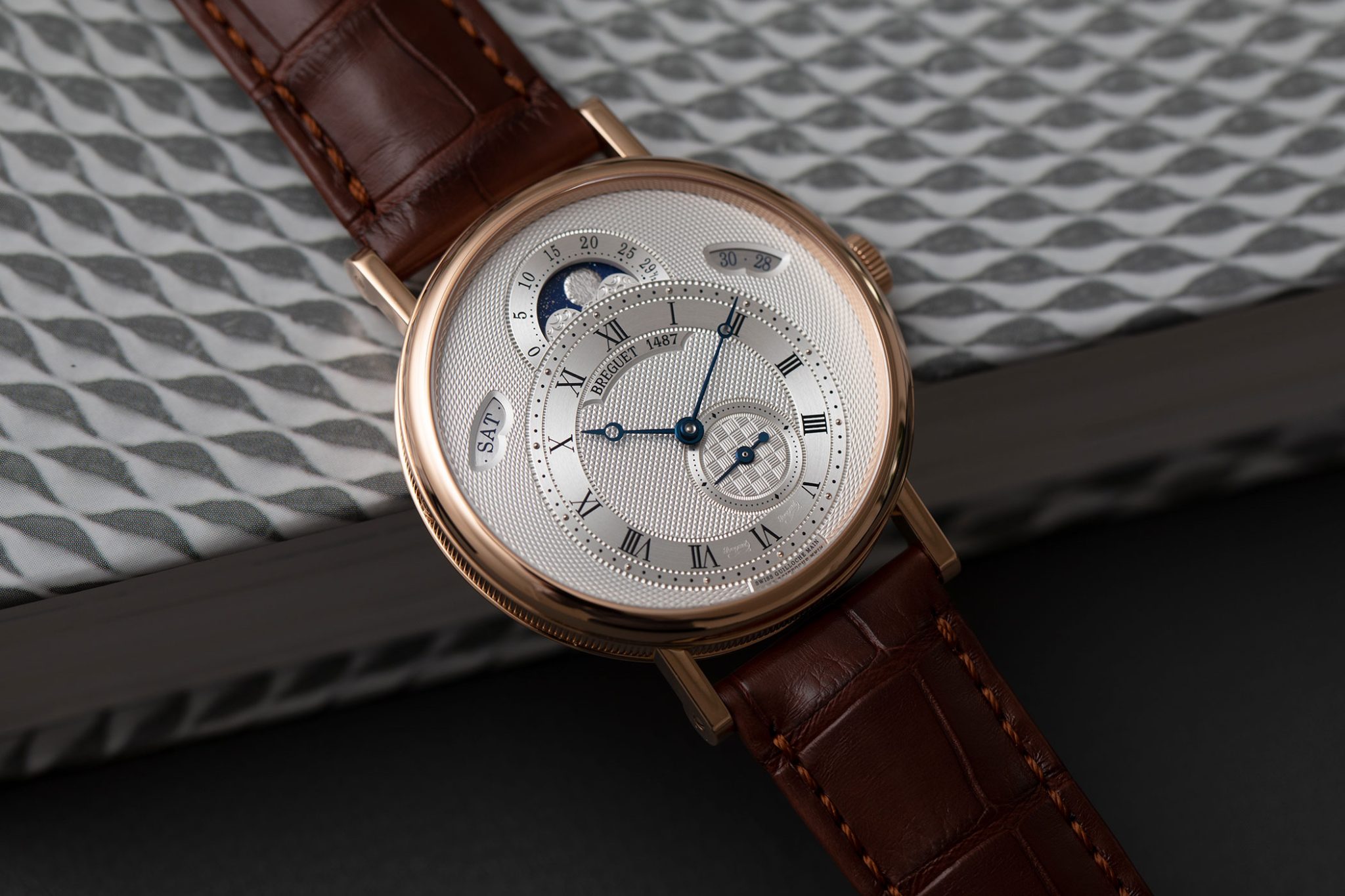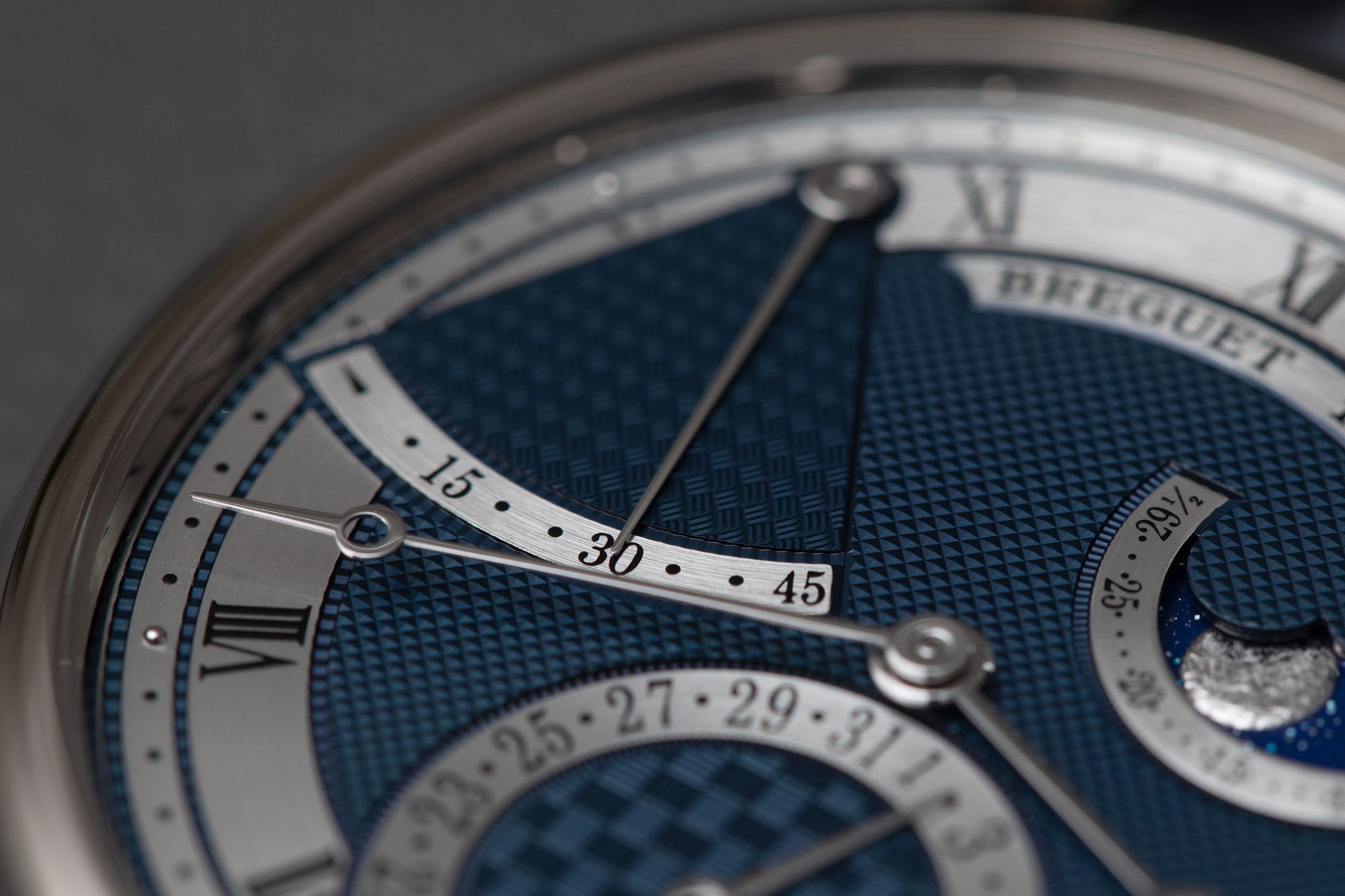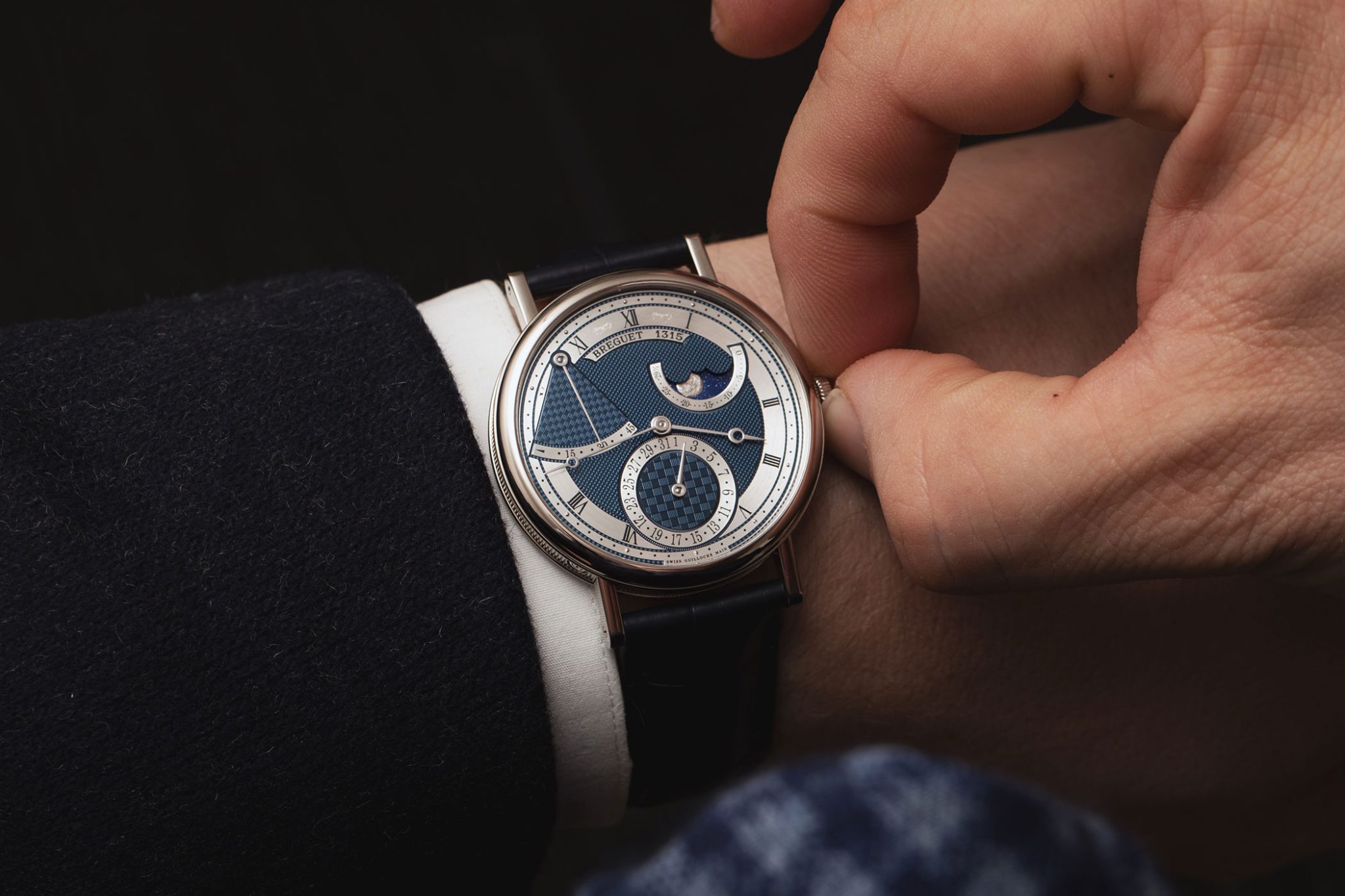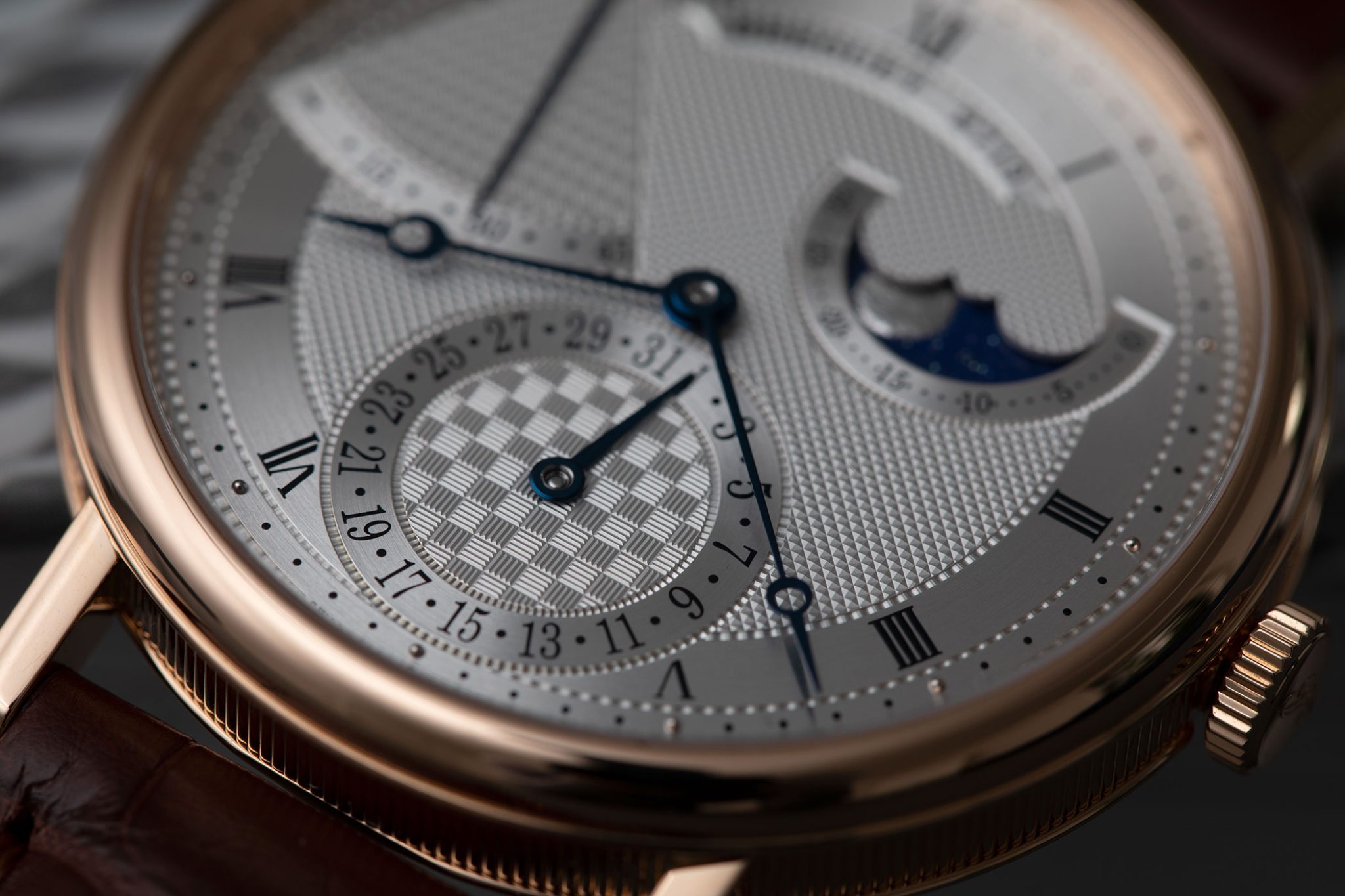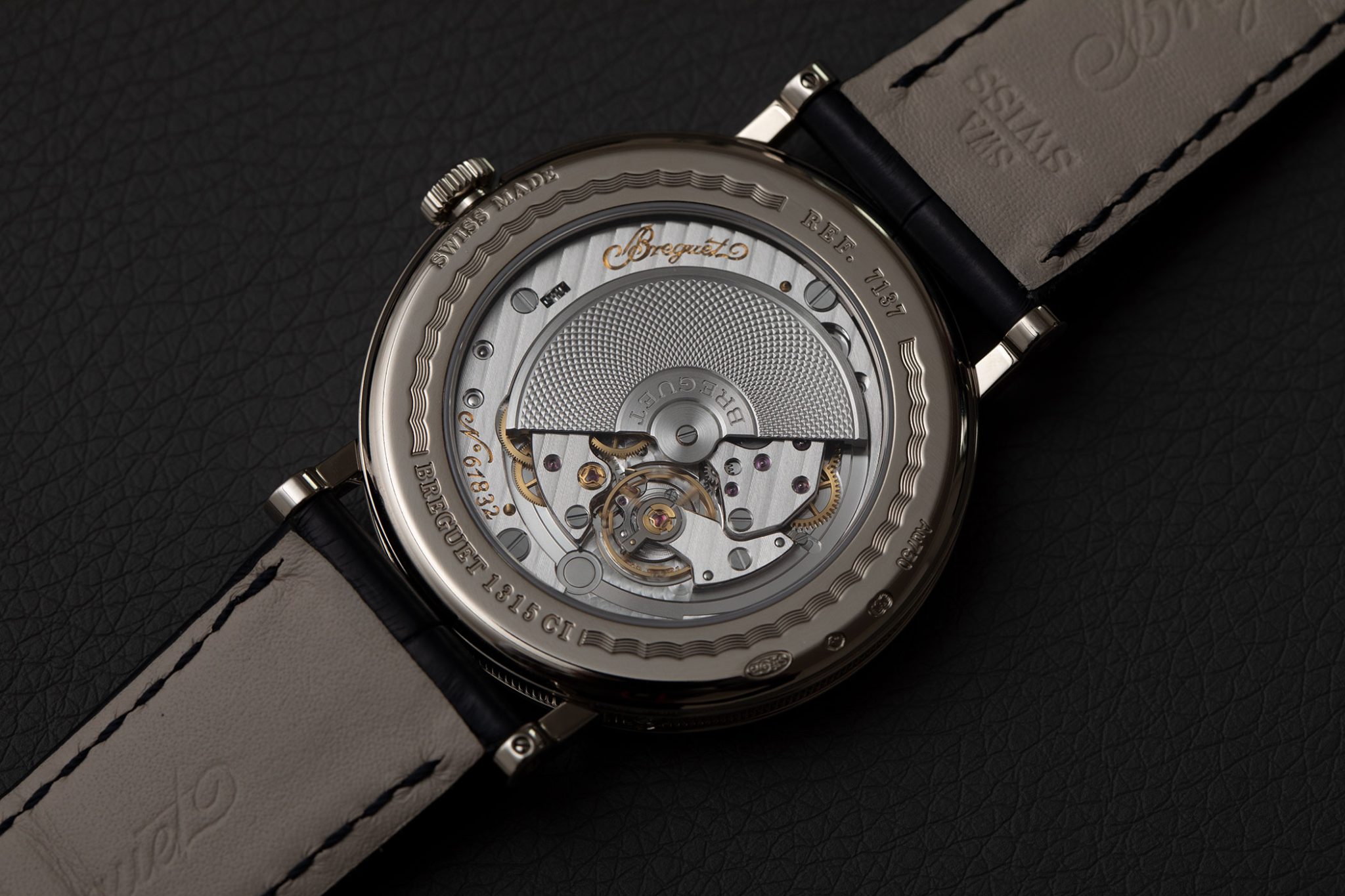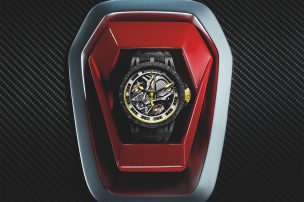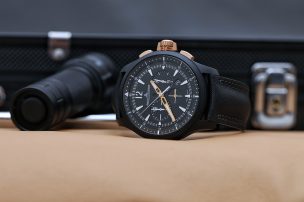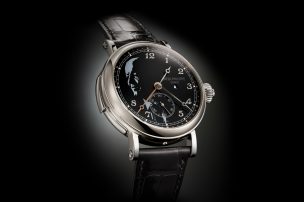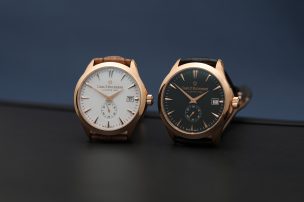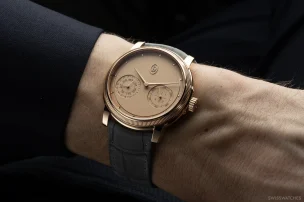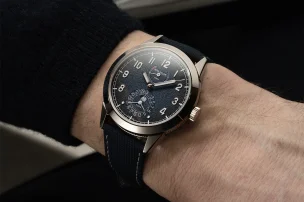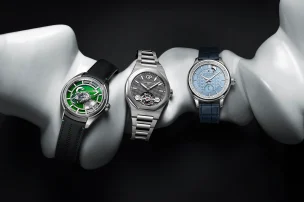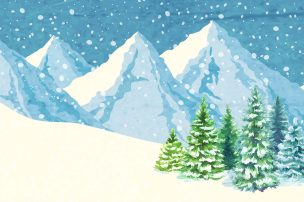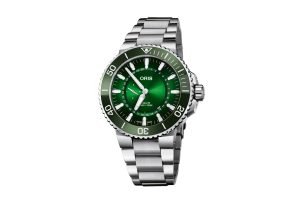
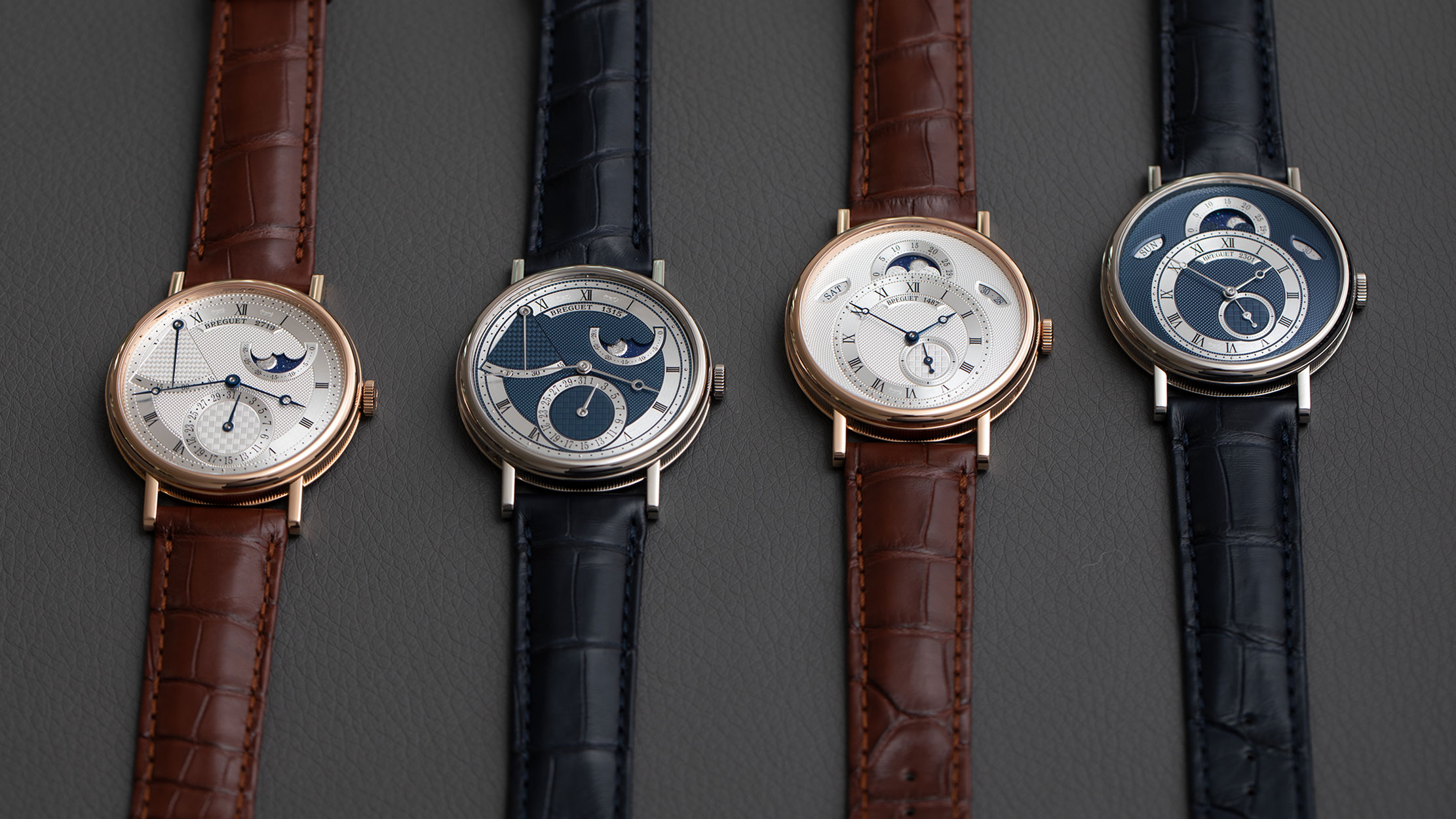
Picking Up From The Past: The New Breguet Classique 7137 And 7337
The new References 7137 and 7337 draw our gaze towards the great tradition and craftmanship of Breguet – a place where people prefer to take a leap forward than follow the latest trends
Abraham-Louis Breguet was your average teenage student; the kind with pitiful levels of concentration, and a constant daydreamer. At least, this is what his descendent Emmanuel Breguet says in his extensive company and family history book, “Breguet – Watchmakers since 1775”. On the one hand, this characterization demonstrates that the general prerequisites needed to become a watchmaker are not always correct. On the other hand, it shows that the Breguet watch line, which is now named the ‘Classique’ line, is everything but a classic, traditional set of watches. Rather, it is above all a line with a great, unconventional history that is full of innovation and discovery.
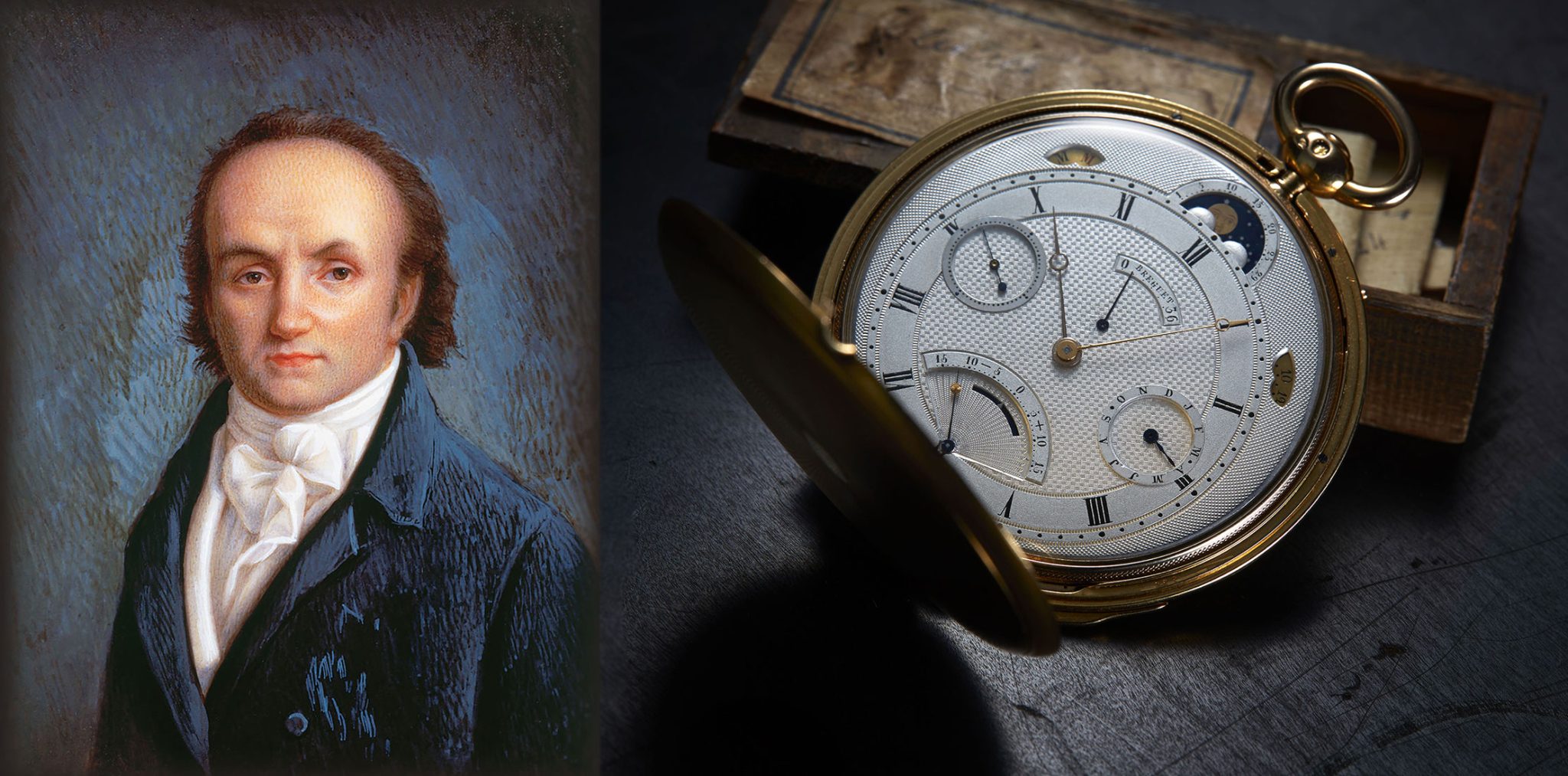
Abraham Louis Breguet and the No. 4691 Grand Complications pocket watch from 1831
Daydreamer Breguet became one of the best-known watchmakers in the world within just a few decades. This is someone who achieved recognition without the power of social media, who with the help of his supporters and customers became someone known amongst the most famous, powerful men and women in the world: from Marie-Antoinette to her husband, the French King Louis XVI, to Napoleon Bonaparte. His clients also included British King George III and his son King George IV, as well as Prussian King Frederick William II, Russian Tsar Alexander I, and Pope Pius VII.
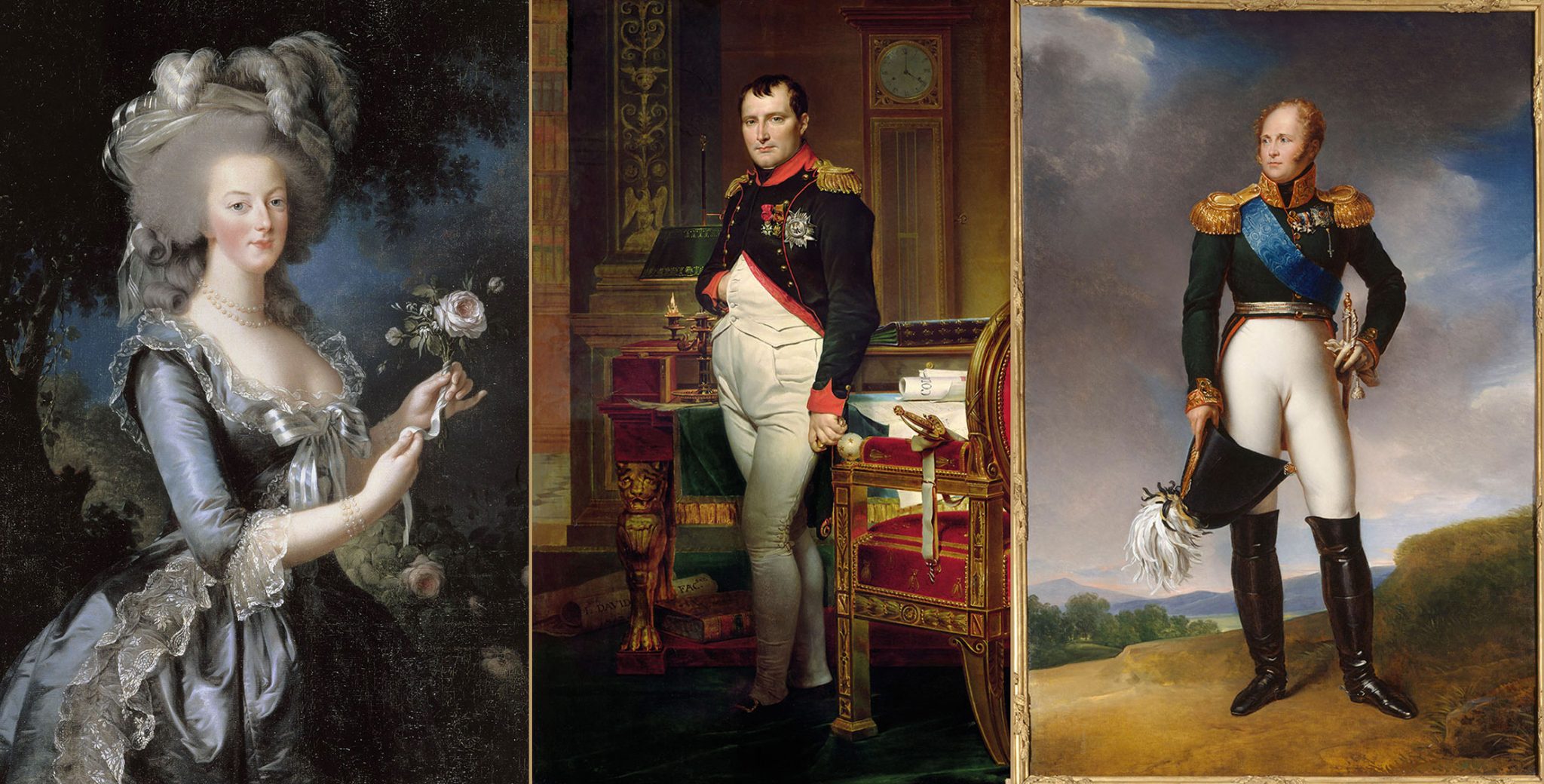
Marie-Antoinette, Napoleon Bonaparte and the Russian Tsar Alexander I
If Abraham-Louis Breguet could see for himself how some manufactures today adorn themselves with alleged well-known “friends of the maison”, he would probably smile wearily. In any case, Breguet horology house undoubtedly has one of the most impressive histories of Haute Horlogerie, and the new Classique references 7137 and 7337 pick up many details of its past.
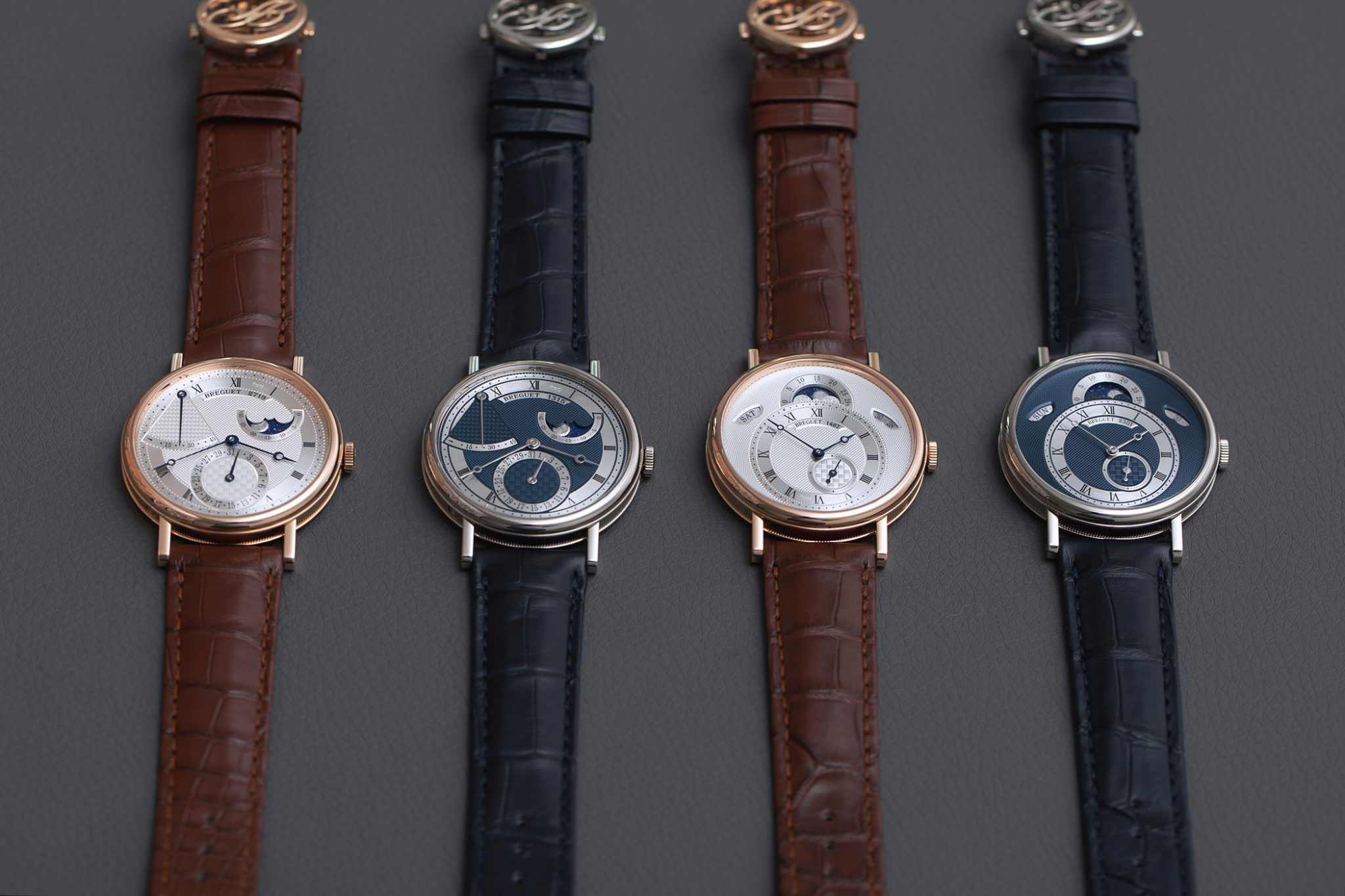
The new Classique-references 7137BR, 7137BB, 7337BR, 7337BB
Tradition
“It’s a great brand for connoisseurs!” enthused a renowned jeweller and Breguet concessionaire. Above all, Breguet offers quality, an impressive history, but is unfortunately not as all-pervading in public perception as the likes of Audemars Piguet or Patek Philippe. This is why the new Classique models can – or should – be used here to illustrate the significance Breguet has had on watchmaking – even beyond pioneering inventions such as the tourbillon or the self-winding watch itself.
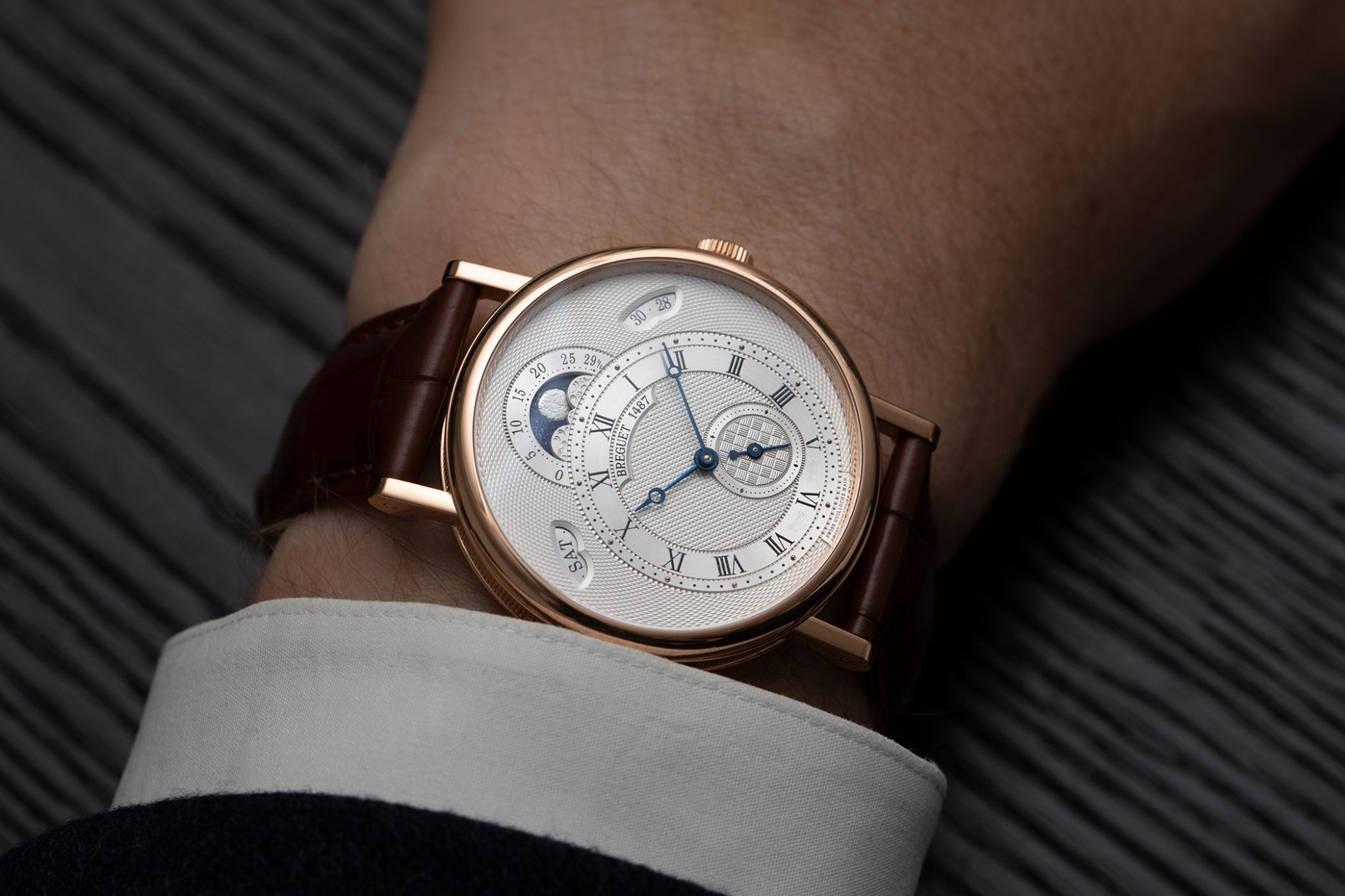
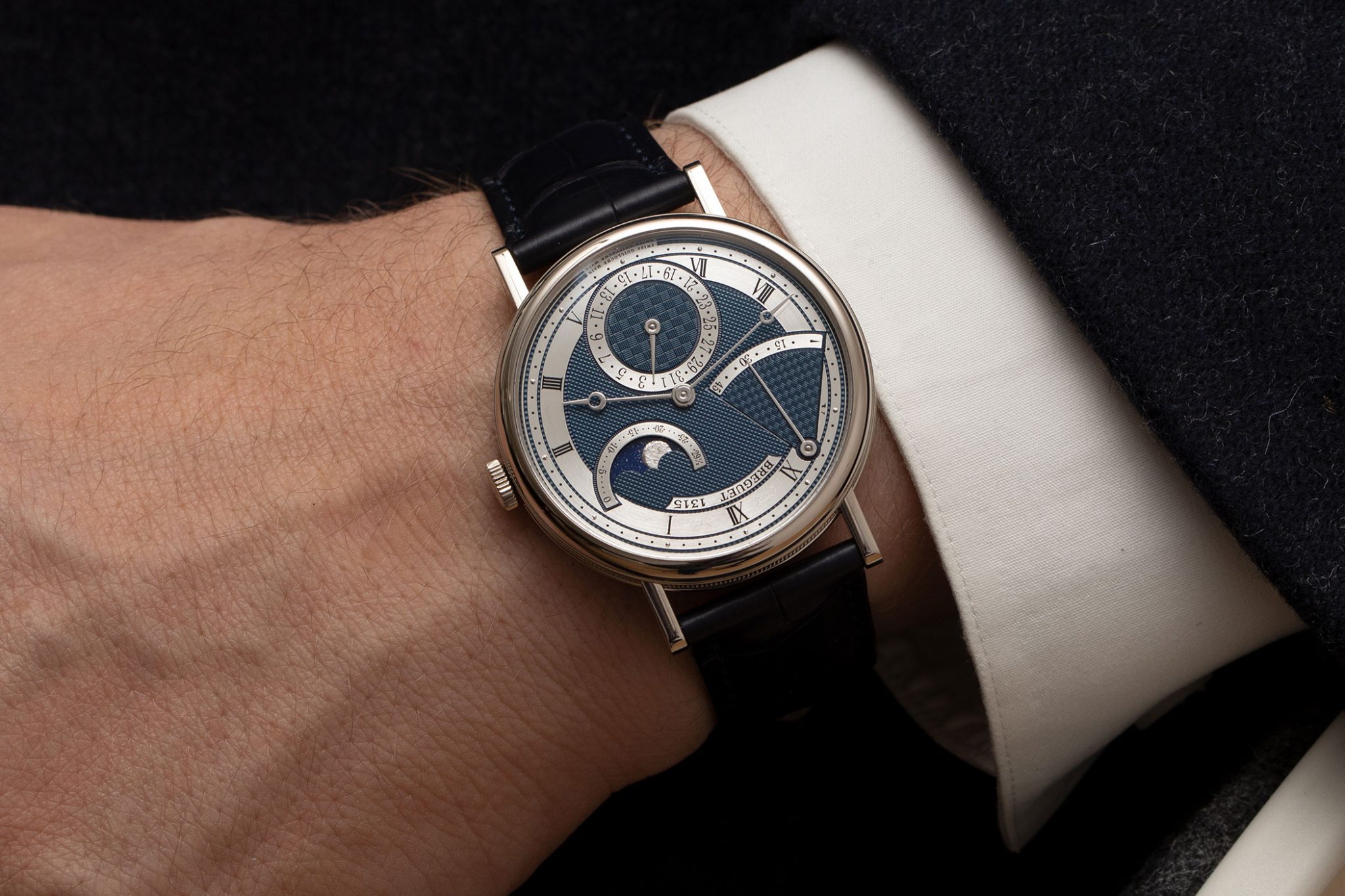
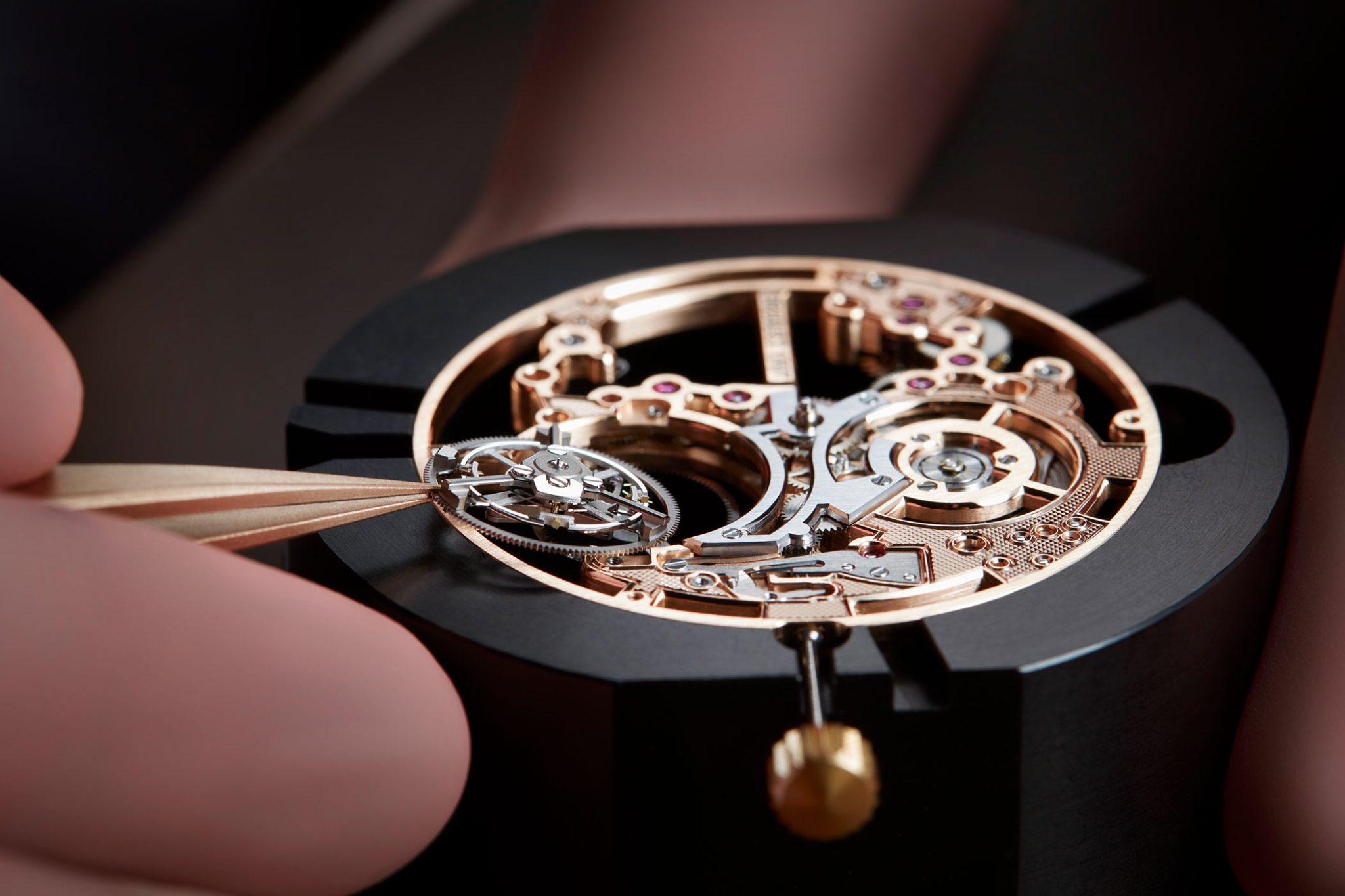
Today, while one may admire the decorative skill seen in the various guilloche patterns of the 7137 and the 7337’s dials, these were once mainly for practical use. In Abraham-Louis Breguet’s mind, they were intended to increase functionality. Breguet first used guilloché in the years before the French Revolution for pocket watch cases and their hinged lids to give them a more matte look that could conceal traces of use and fingerprints.
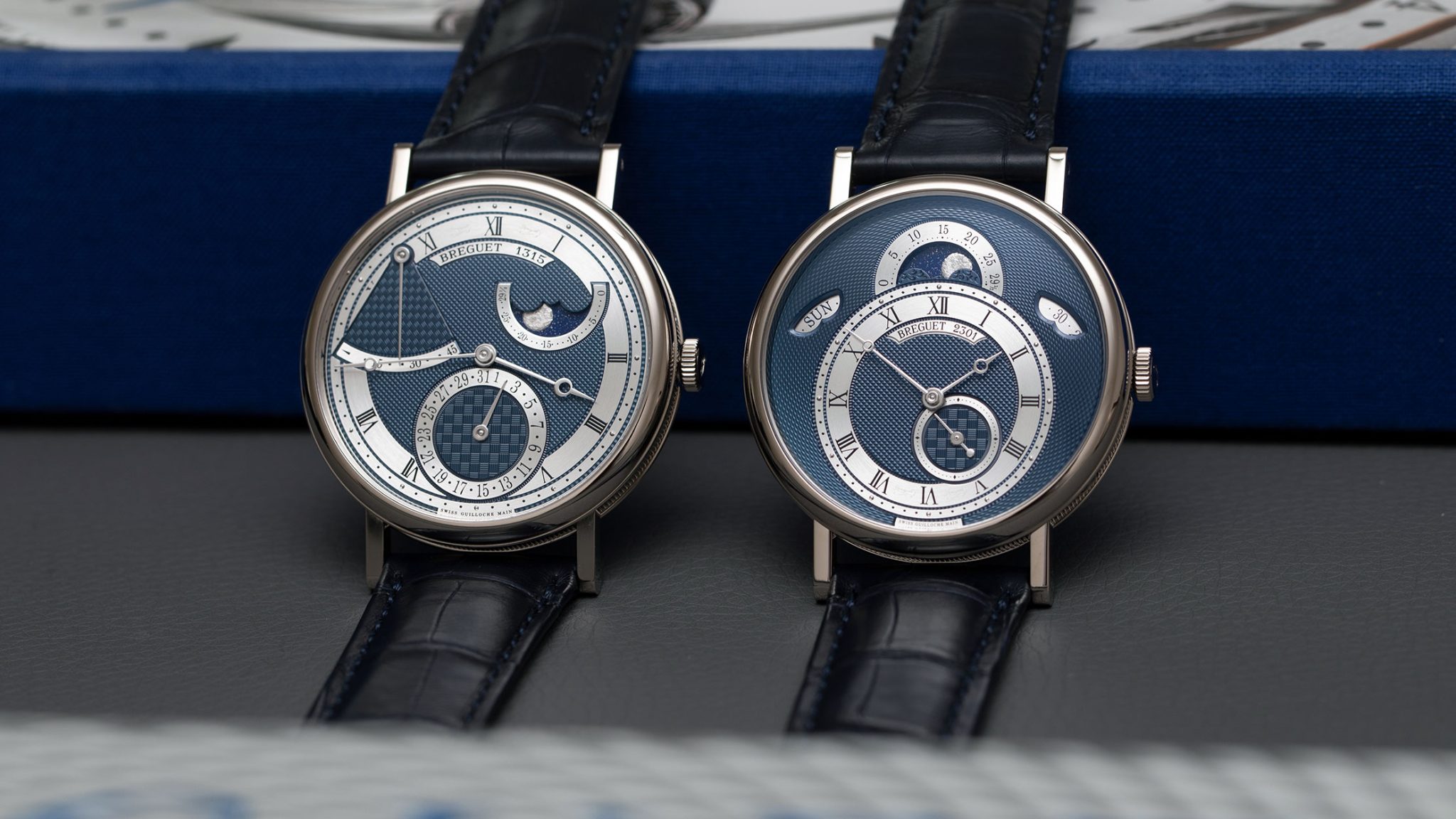
However, he also swiftly realised that different patterns on the dial could direct the eye and thus help to emphasise particular functions of a watch. The same applies, incidentally, to the indices still known today as “Breguet numerals”. Here too, the emphasis was less on the decorative aspect than on the fact that the extra-flat, elegantly curved numbers were particularly easy to read. However, the new Classique models in question have Roman numerals, which gives the timepieces a less playful look. That said, they have a pleasantly calming effect, taking into consideration the large number of patterns on the dials.
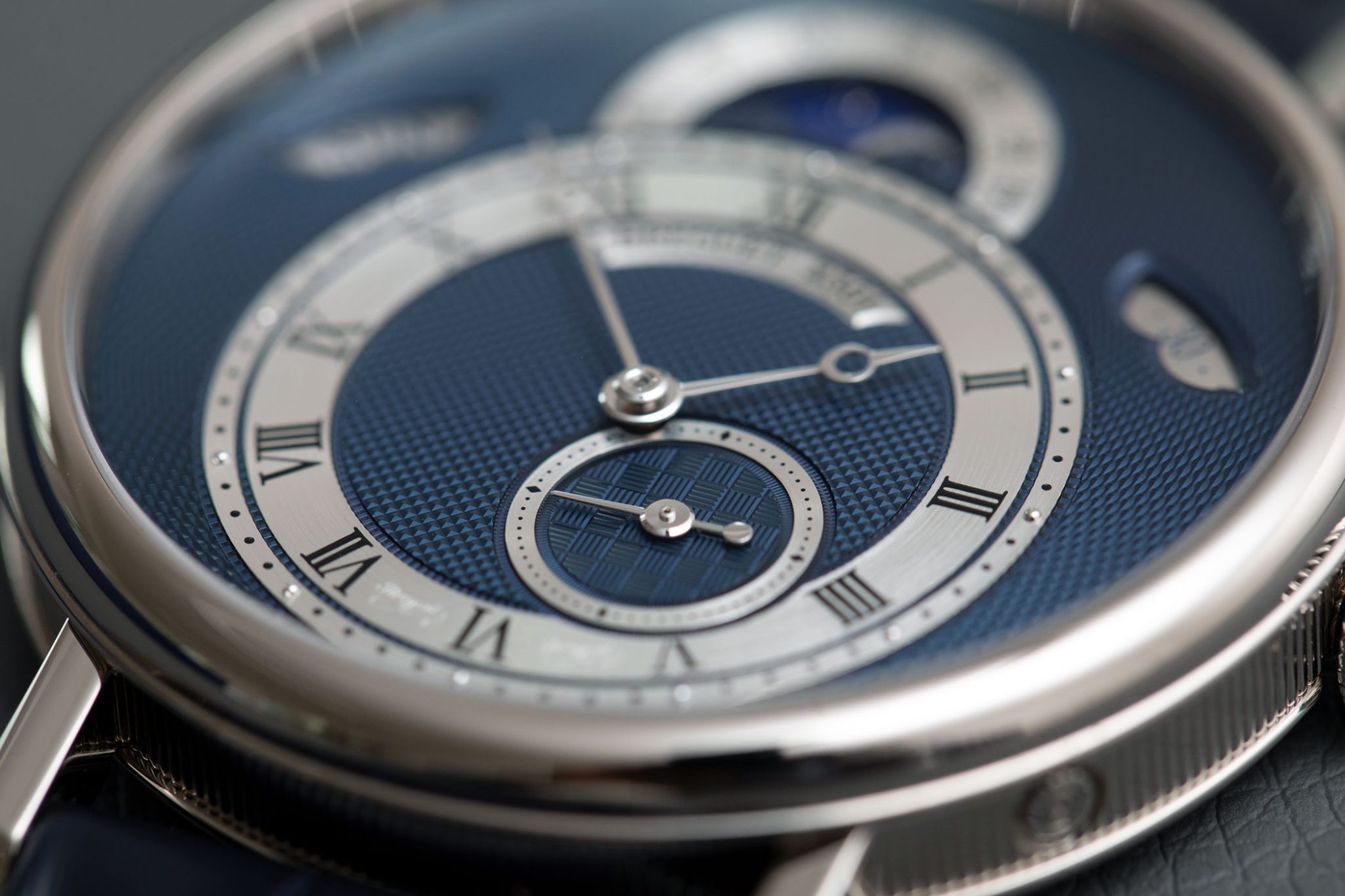
Guilloché in perfection
Basket pattern, Chequered, Clou de Paris: The 7137
Today, those who take a look at the dial of a Classique 7137, or its sibling model Classique 7337, will see a craftsmanship that already was practiced almost identically 200 years ago. Circular patterns are created by hand on round drawing machines, while straight-line guilloche patterns are done using straight drawing machines.
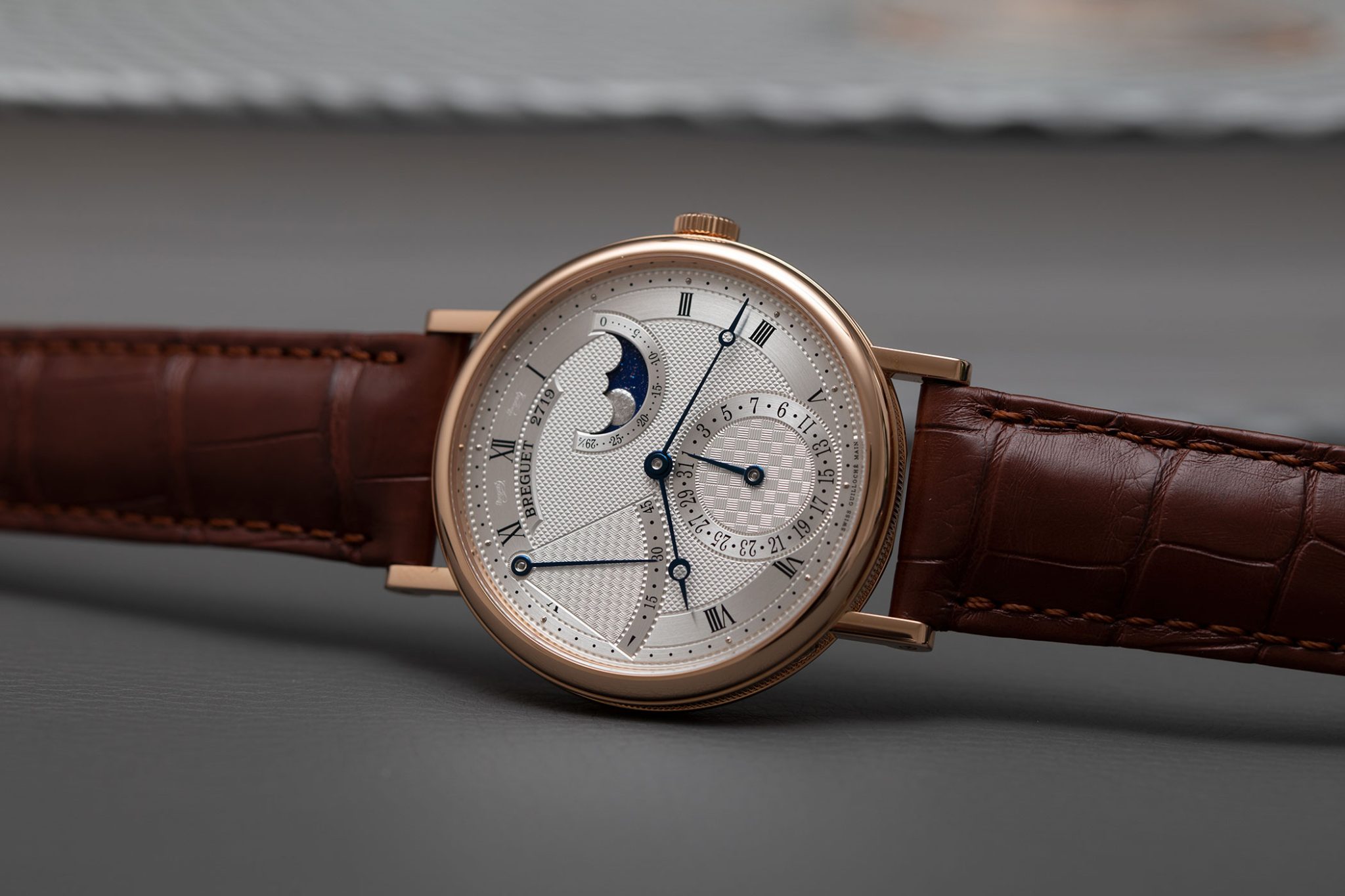
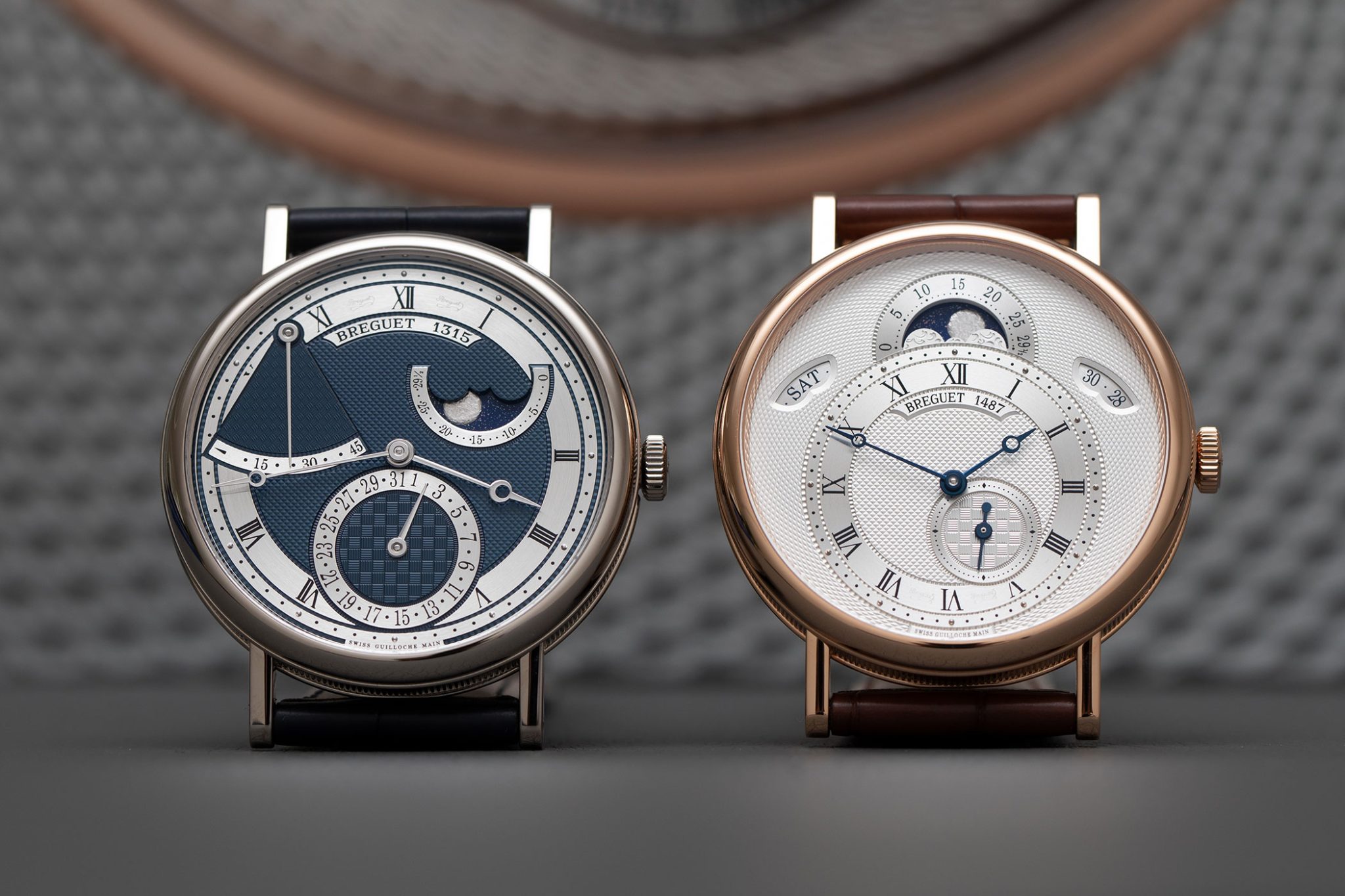
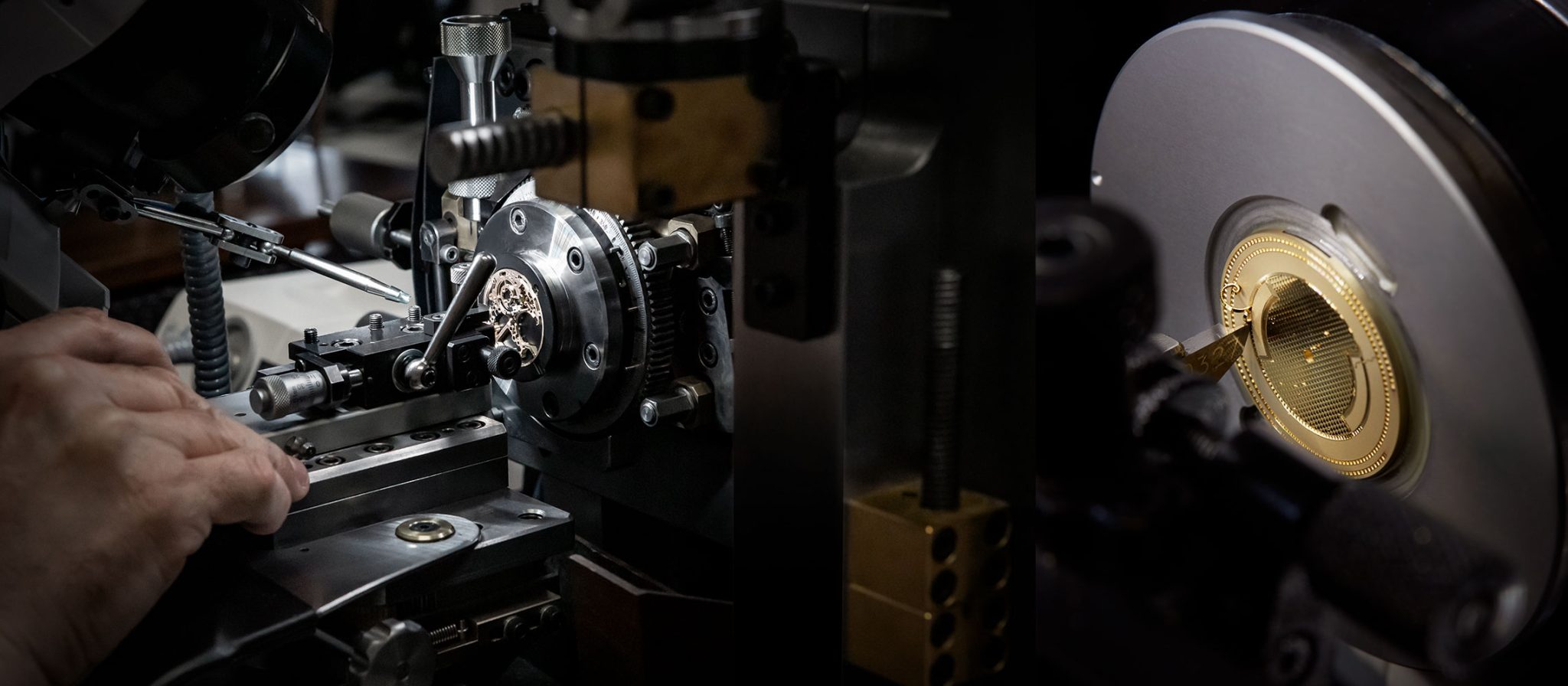
The most striking features of the Classique 7137 is the power reserve indicator with the basket pattern decoration “panier maillé”, the date display in a chequered pattern, and most of the dial is otherwise in what is probably the most famous guilloché pattern of all: the “Clou de Paris”. This design is inspired by a historic Breguet pocket watch, the No. 5 Perpétuelle.
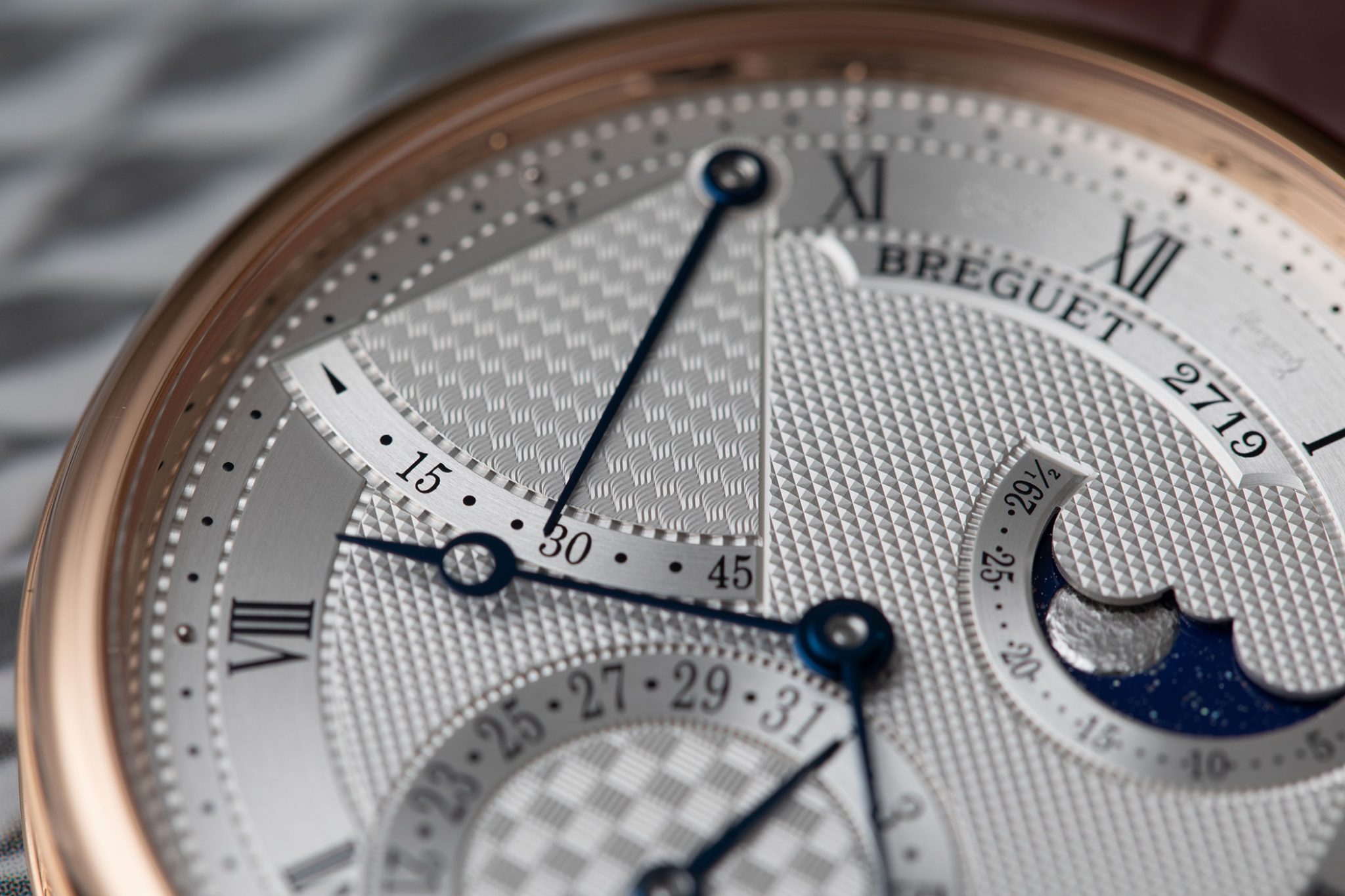
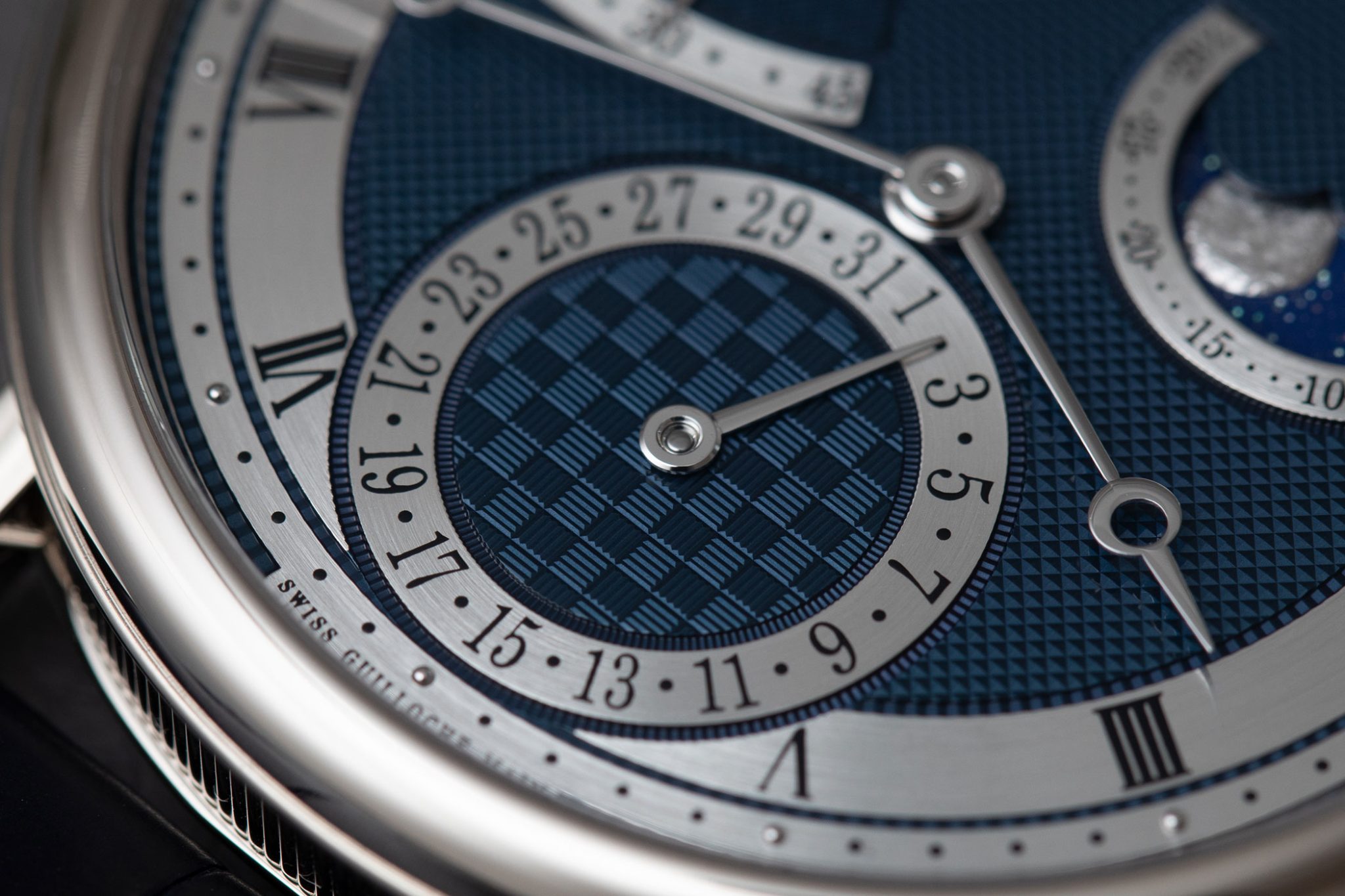
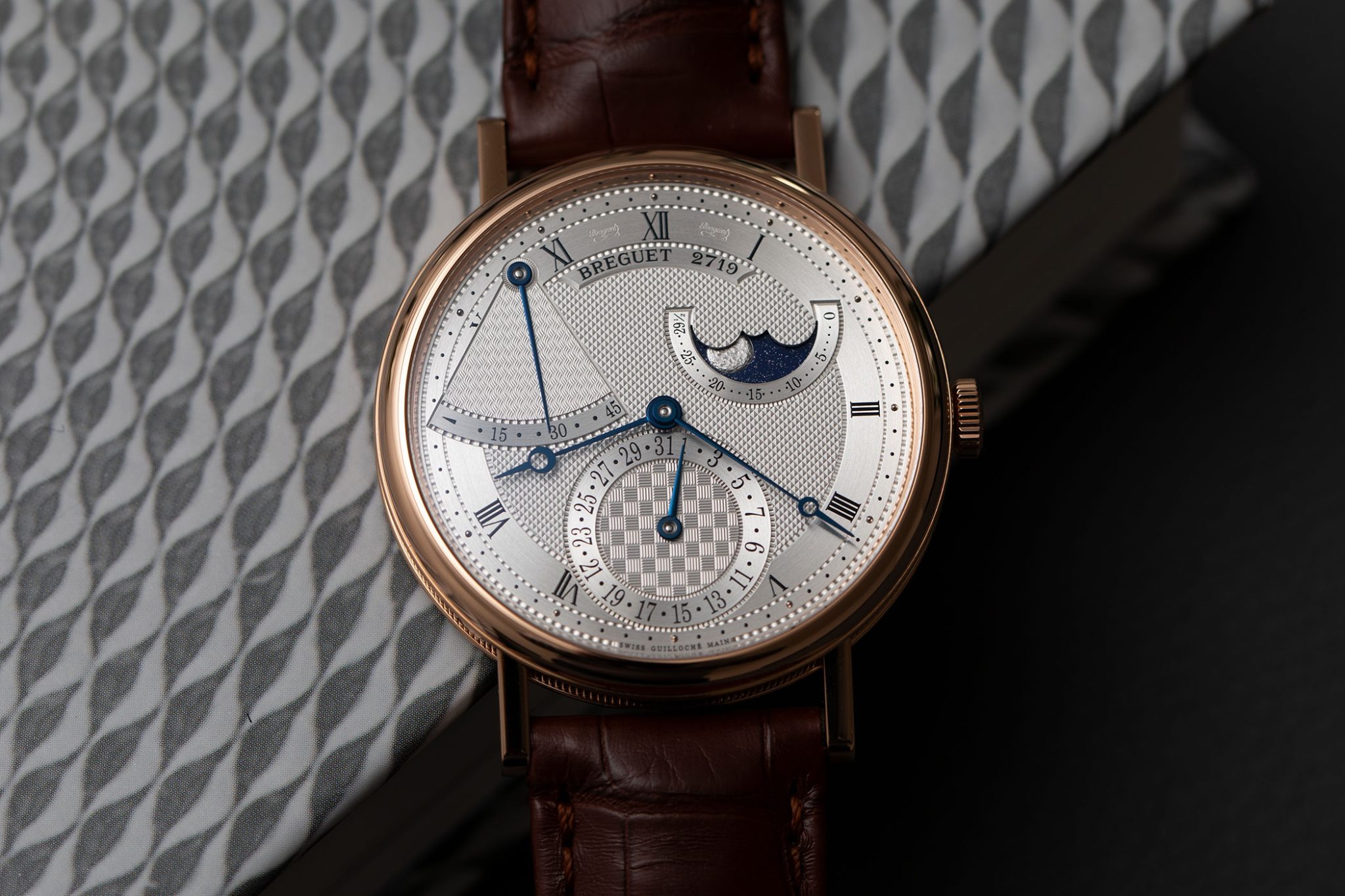
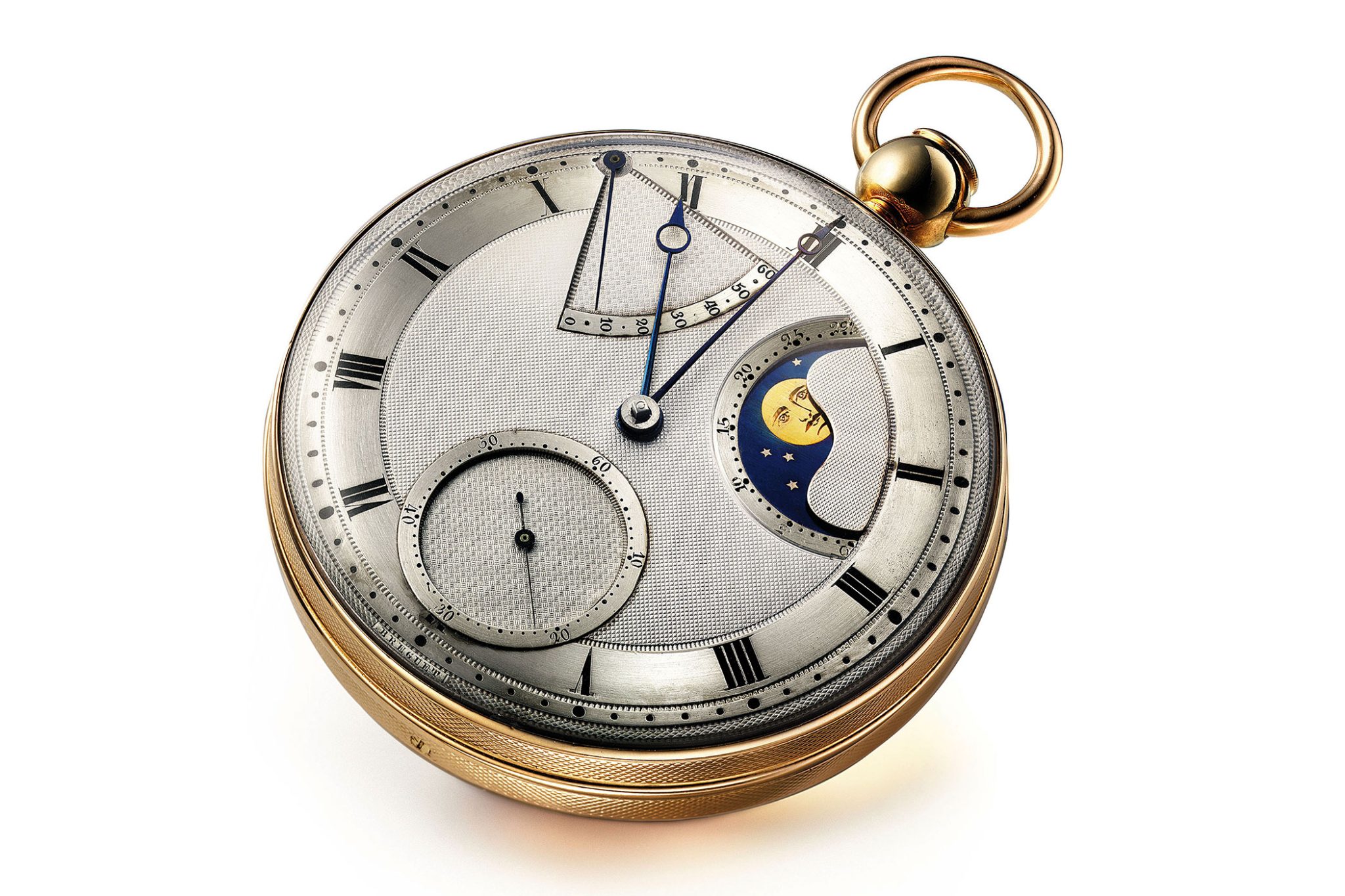
The new reference is available either with a blue dial in white gold or with a silver-plated gold dial in a rose-gold case. It is powered by the extra-thin automatic caliber 502.3 DR1, which gives the watch a slim height of 8.65 mm. This harmonises very well with its diameter of 39 mm, and makes the 7137 a typical dress watch, showcasing dial details in which you could lose yourself for eternity. While the moon-phase complication is often the visual highlight on other models, it almost fades into the background here in the shadow of the guilloché. The price (including the reduced value added tax of 16 percent) is 37,560 euros.
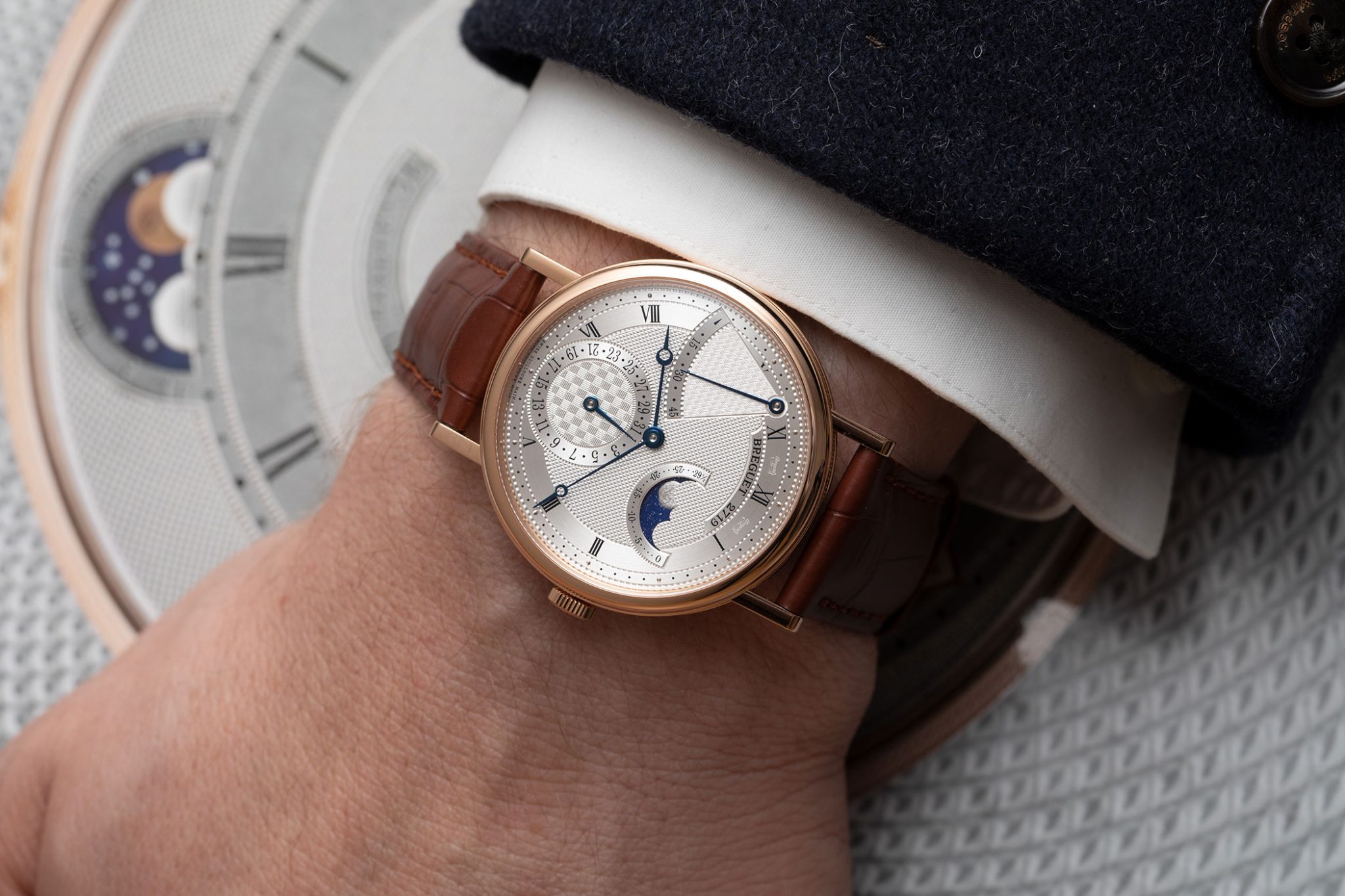
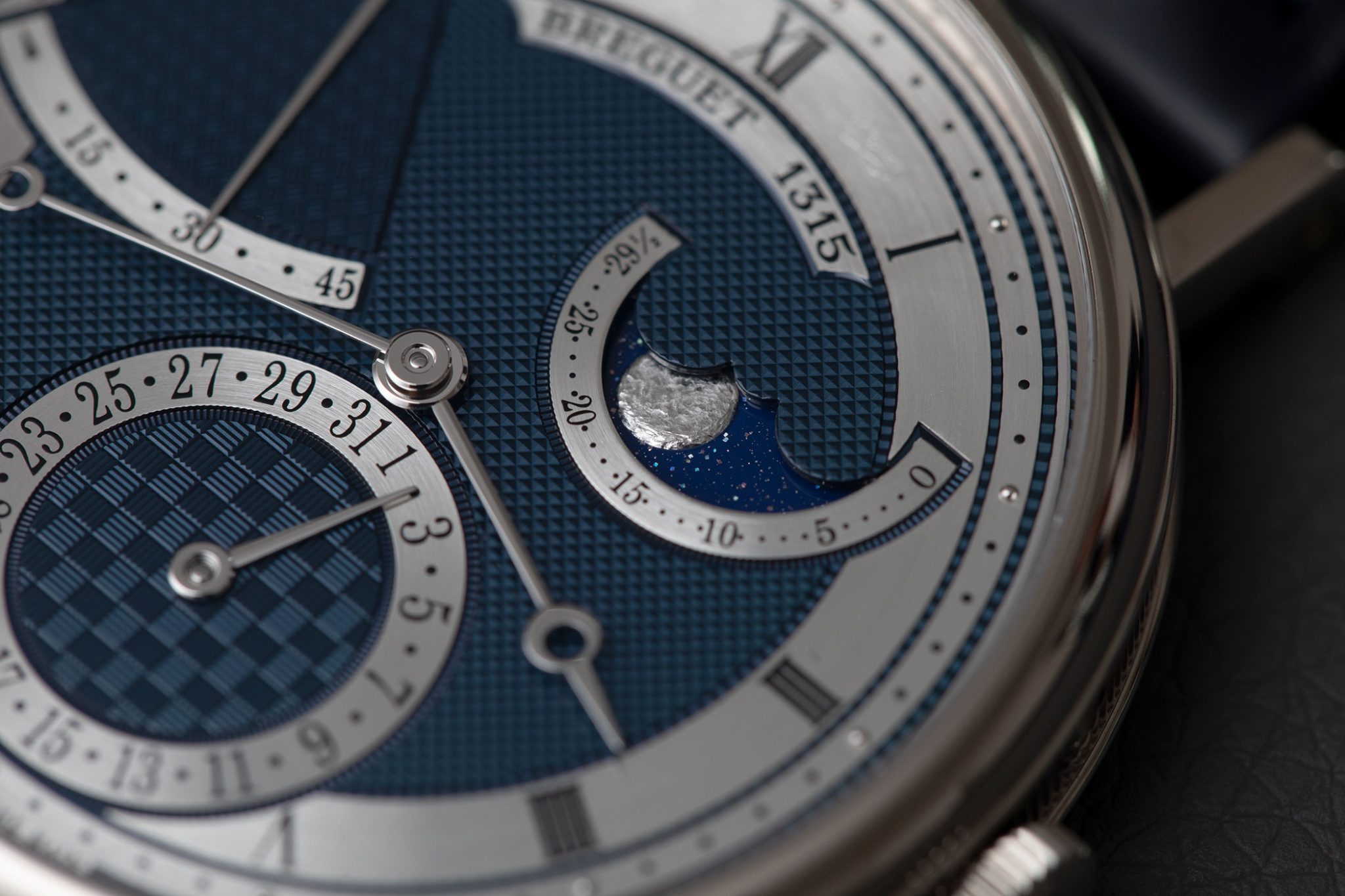
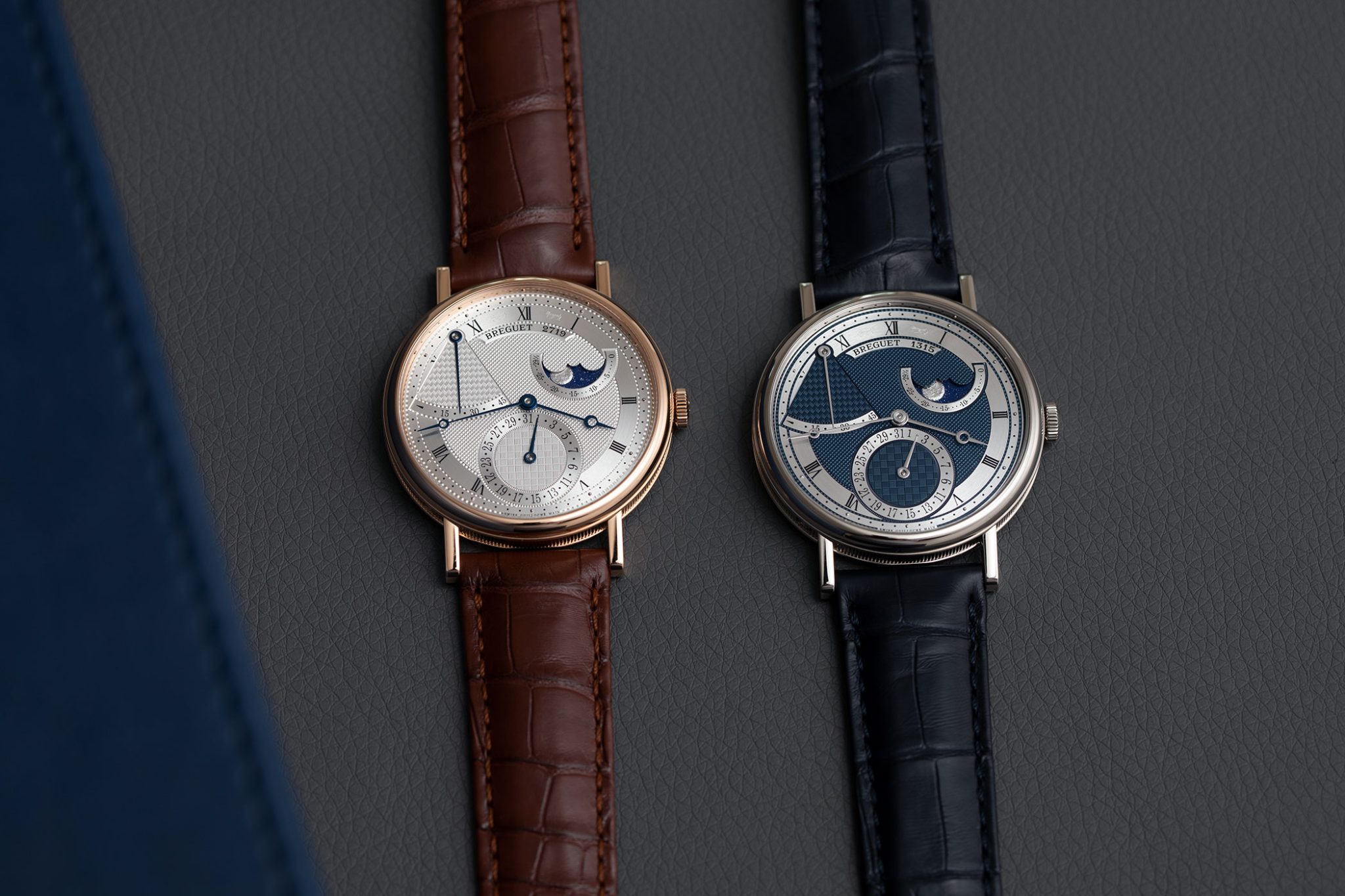
Thinking decentralized: the 7337
The moon-phase is of particular importance in the Breguet Classique 7337. This watch presents another 19th century innovation that is considered “typically Breguet”; decentralized dials. Abraham-Louis Breguet was already using them in pocket watches in around 1812.
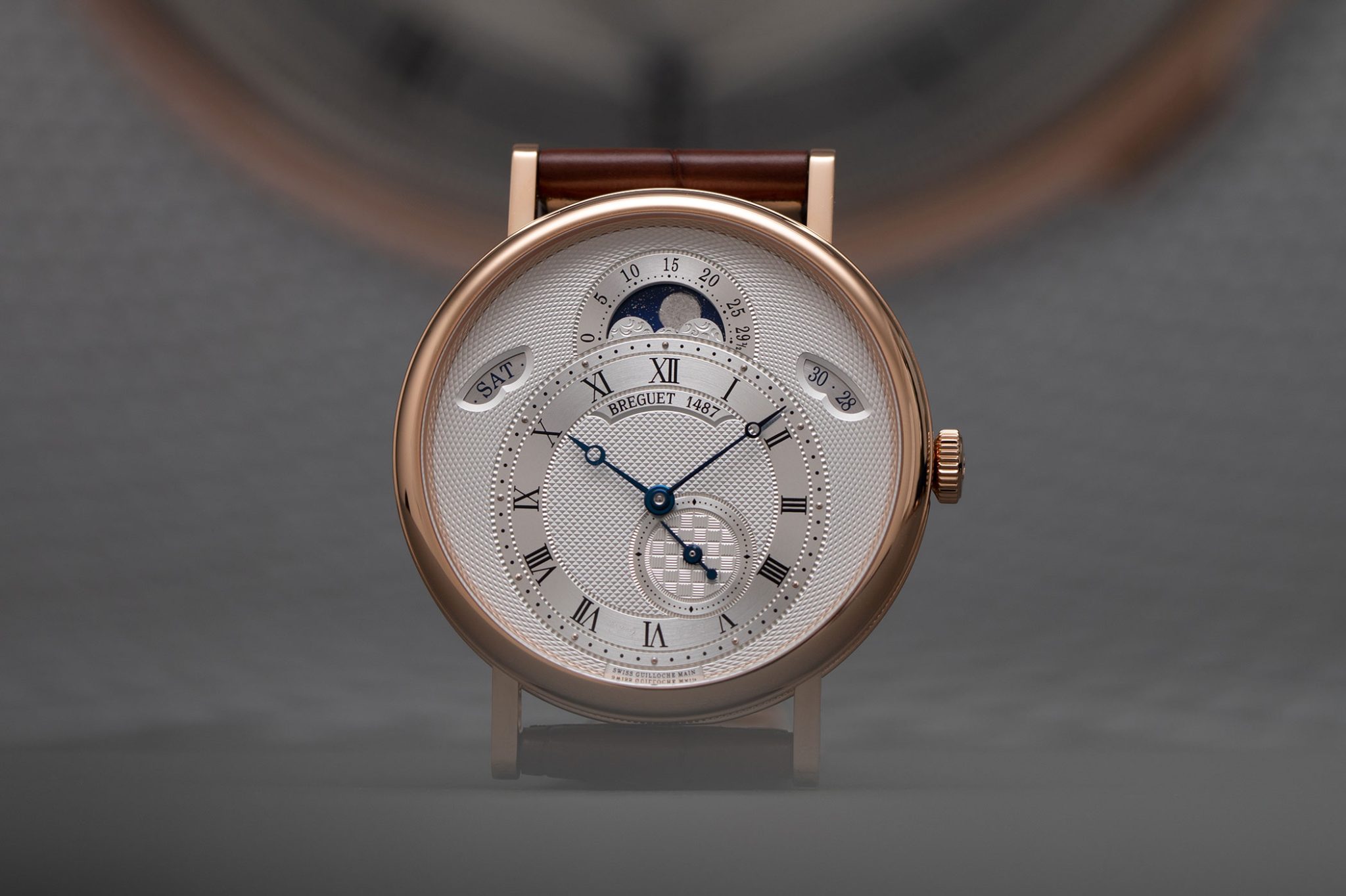
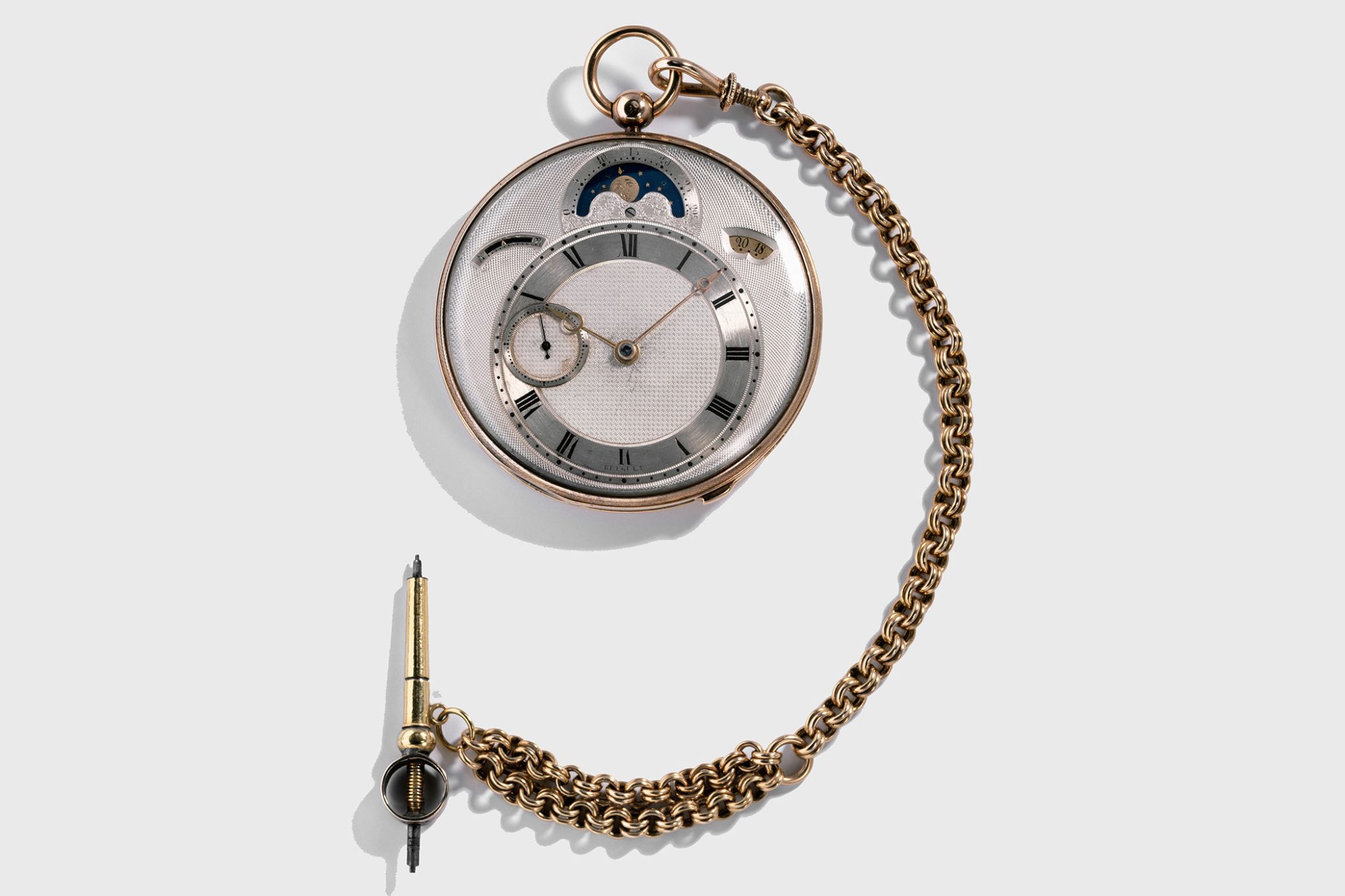
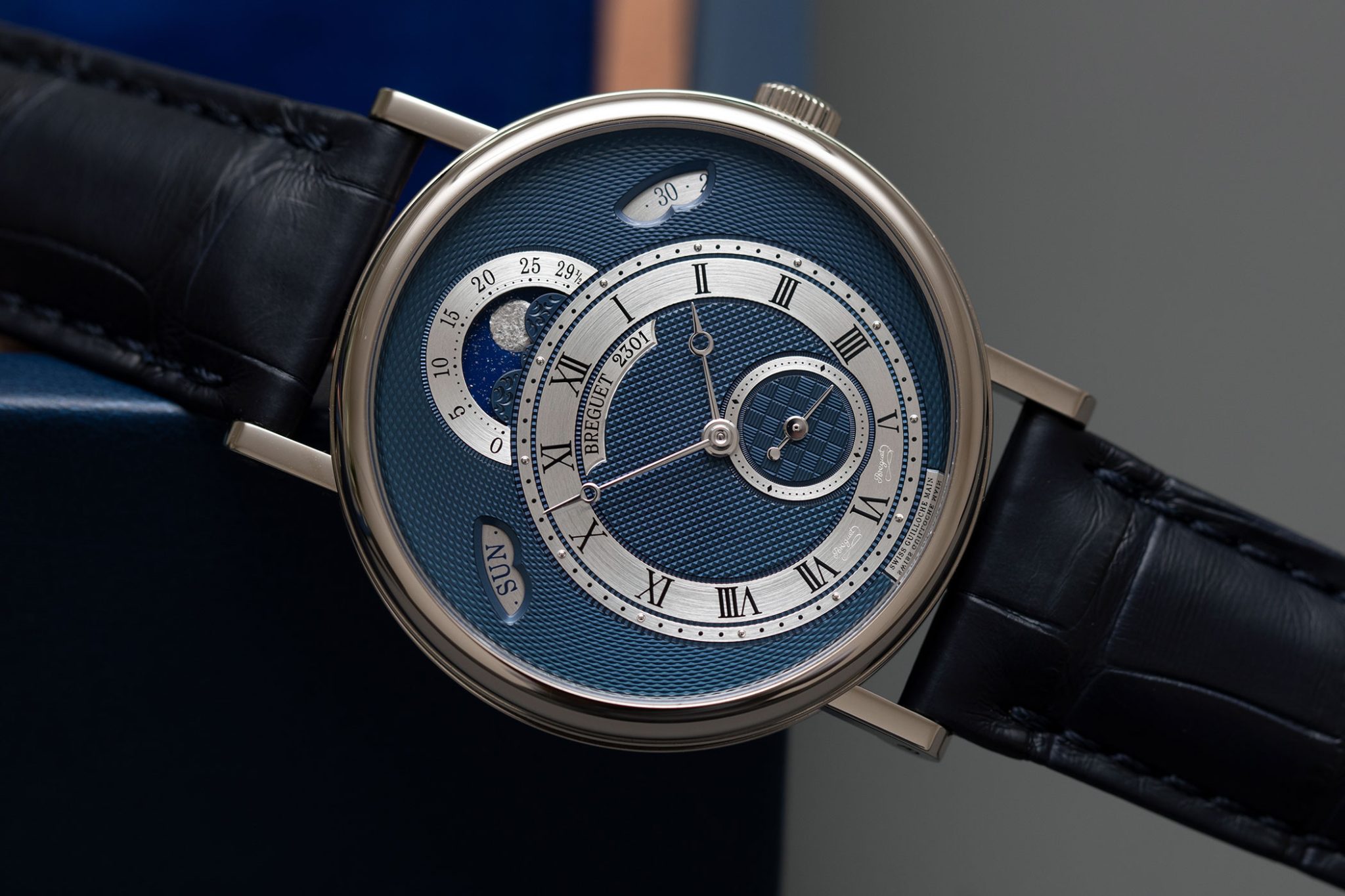
The Classique-reference 7337 is ispired by pocket watch Nr. 3833
The hour circle of the 7337 is at 6 o’clock and the moon-phase display at 12 o’clock, making it similar to the historical pocket watch No. 3833 with a quarter-hour repeater, sold in 1823. The moon-phase display is particularly charming and intricate in this Classique; the lacquered night sky – in which the Milky Way seems to sparkle – is framed by engraved clouds. Unlike the 7137, it does not display the power reserve via the power reserve indicator. Instead, two windows at the 10 and 2 o’clock indicate the day and date, in another reference to pocket watch No. 3833.
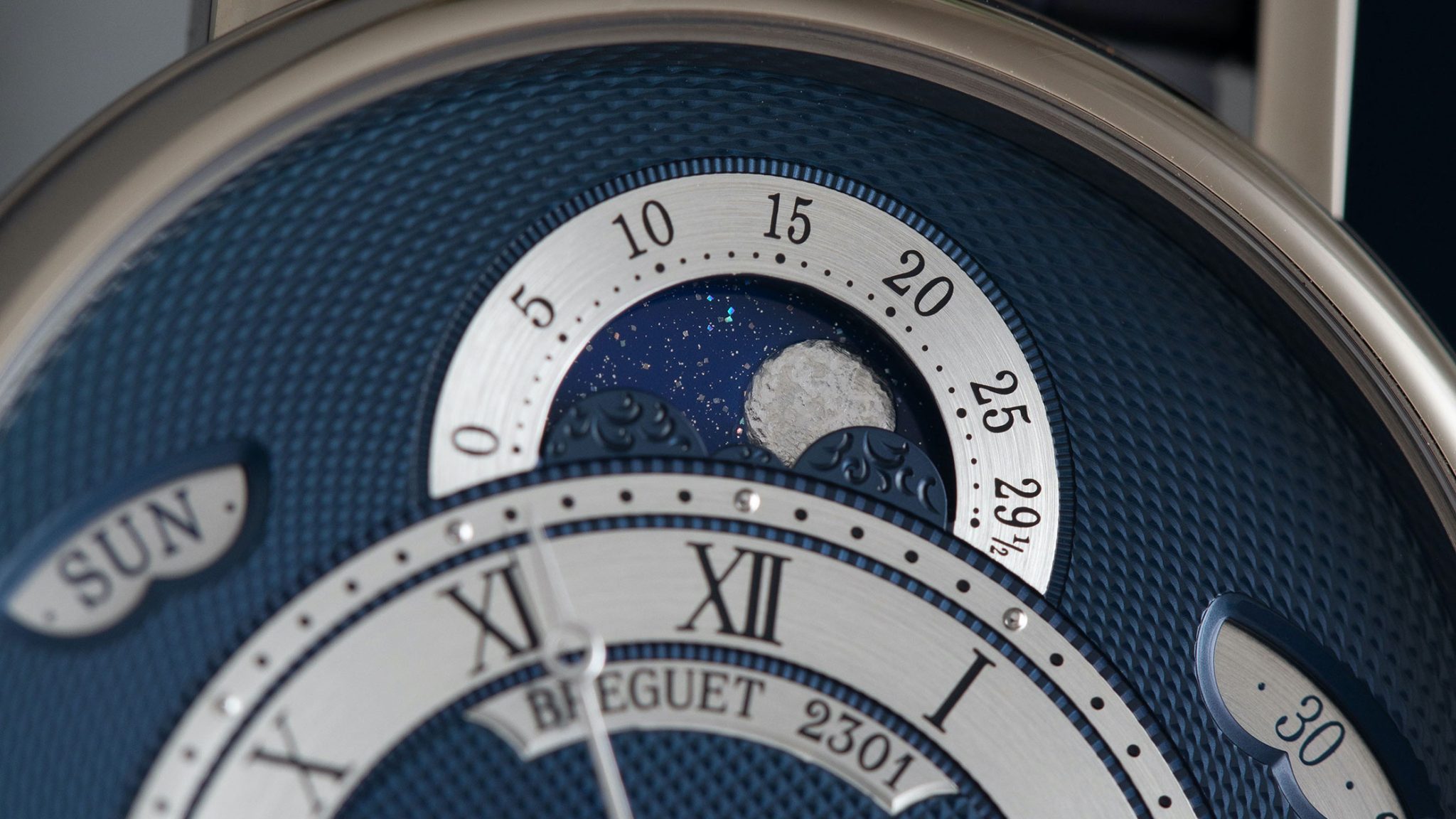
Guilloché work can be admired on the 7337 as well; the small seconds are decorated with a checkerboard pattern, the outer edge of the hour circle is adorned with a barleycorn motif, and the centre is in the “Clou de Paris” style.
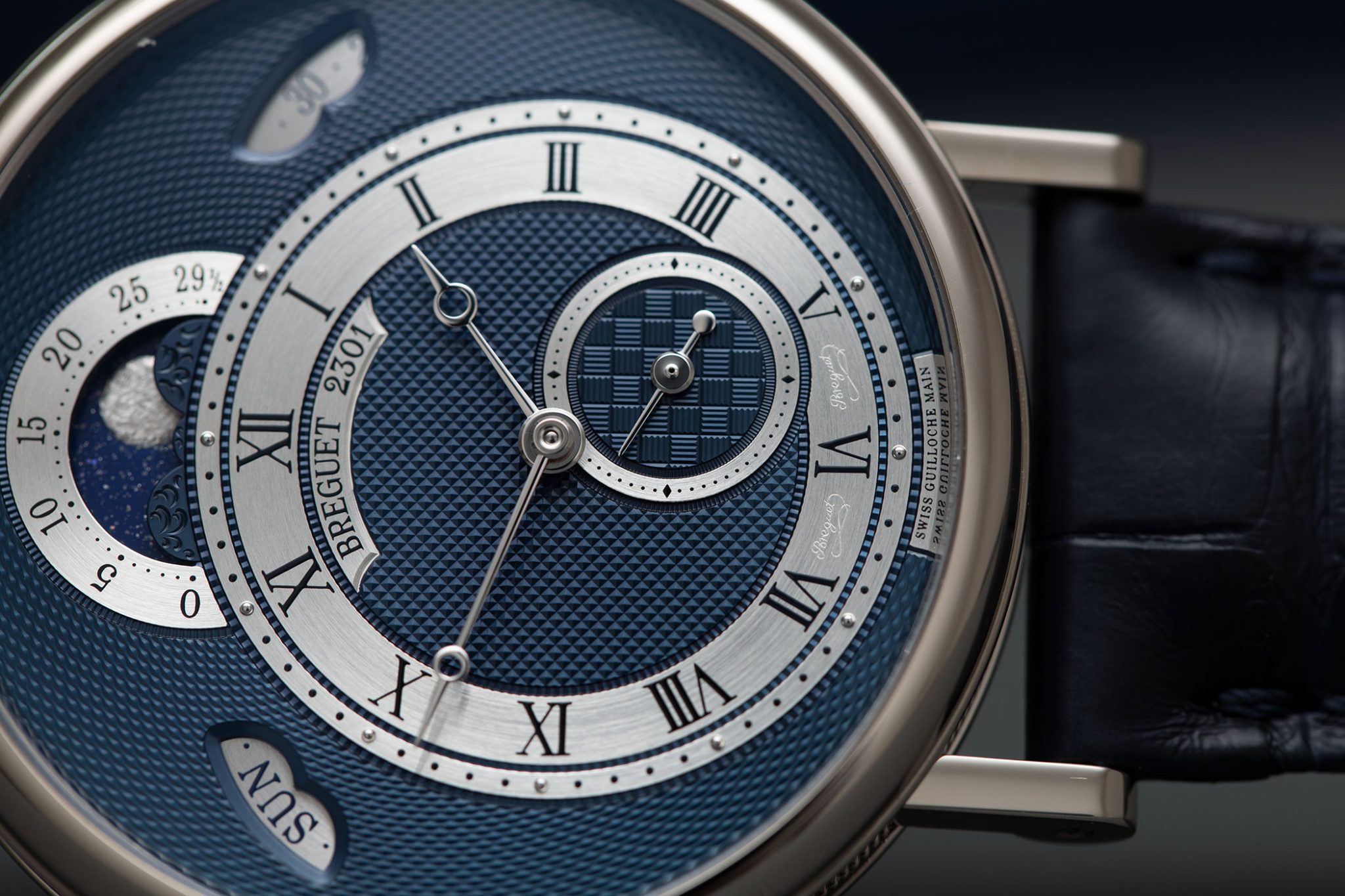
The timepiece also measures 39 mm in diameter and is available either with a blue dial in a white-gold case or a silver-plated gold dial in a rose-gold case. At 9.9 mm in height, it is only a fraction higher, as this version of the calibre, 502.3 QSE1, requires a little more space. Its price (including reduced VAT of 16 percent), is 40,450 euros.
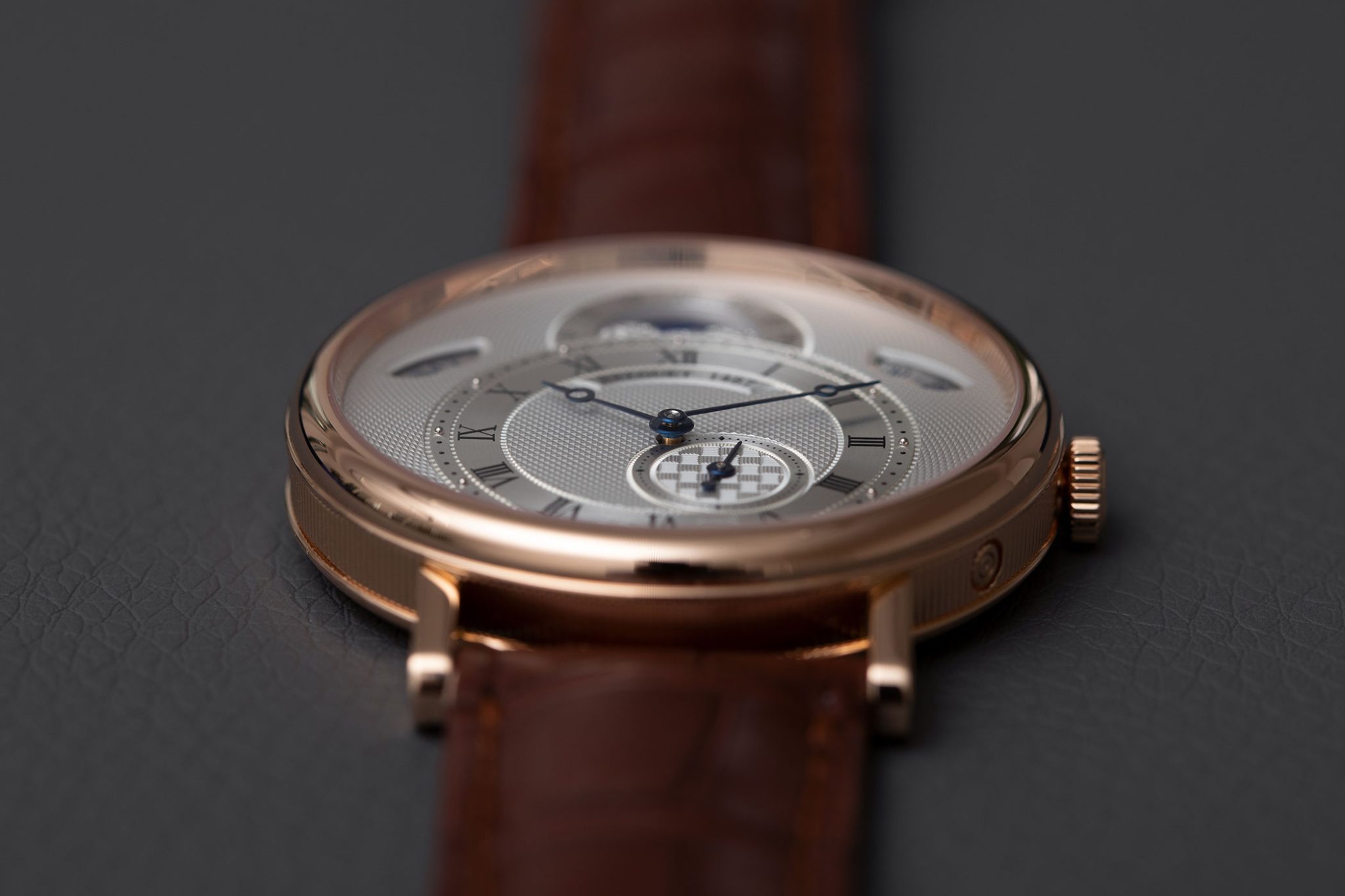
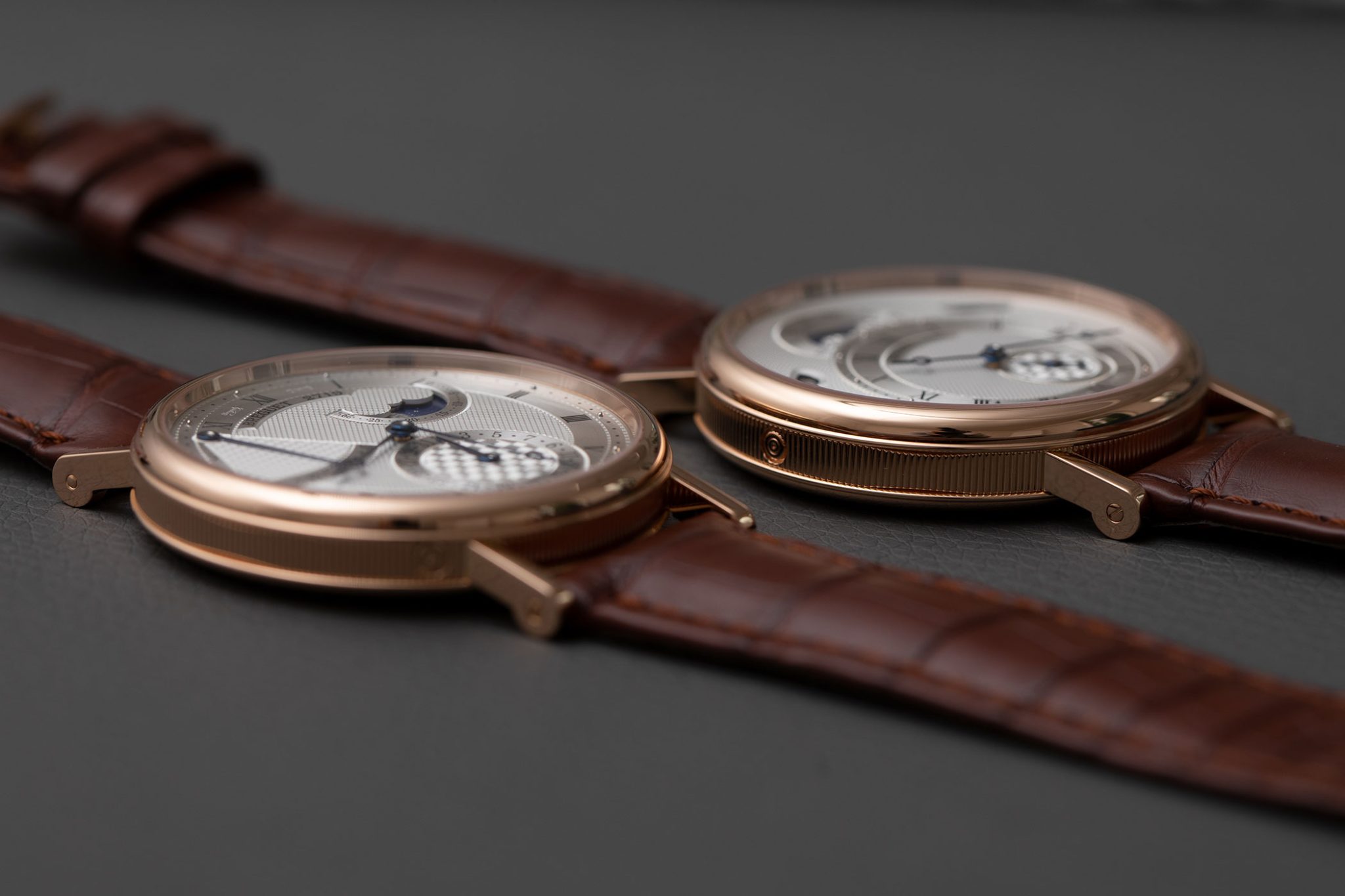
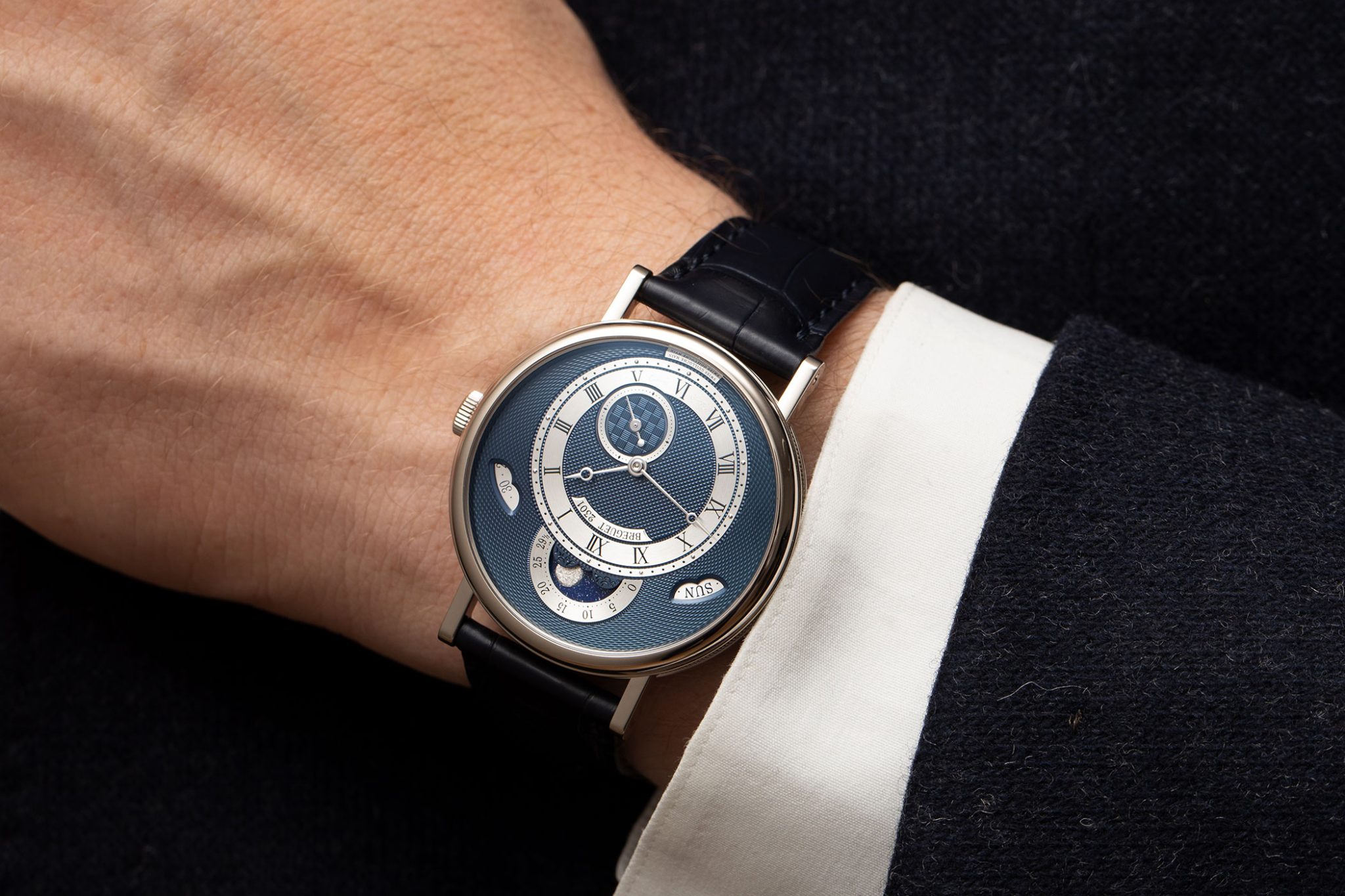
With this pricing, Breguet is going to stand out from the most prestigious competitors. For similar terms, they offer timepieces with annual calendar complications where the customer does not have to correct the calendar quite so often. Ultimately, however, at this level of Haute Horlogerie, it is probably futile to worry about pricing. And also, on another note – there are hardly any directly comparable models featuring such use of guilloché. Therefore, in this small niche area of the watch market, it has probably always been a little more expensive to have special tastes. Also, at the end of the day, a Breguet is still simply the watch of royalty, and perhaps this constitutes to the brand’s popularity in Russia.
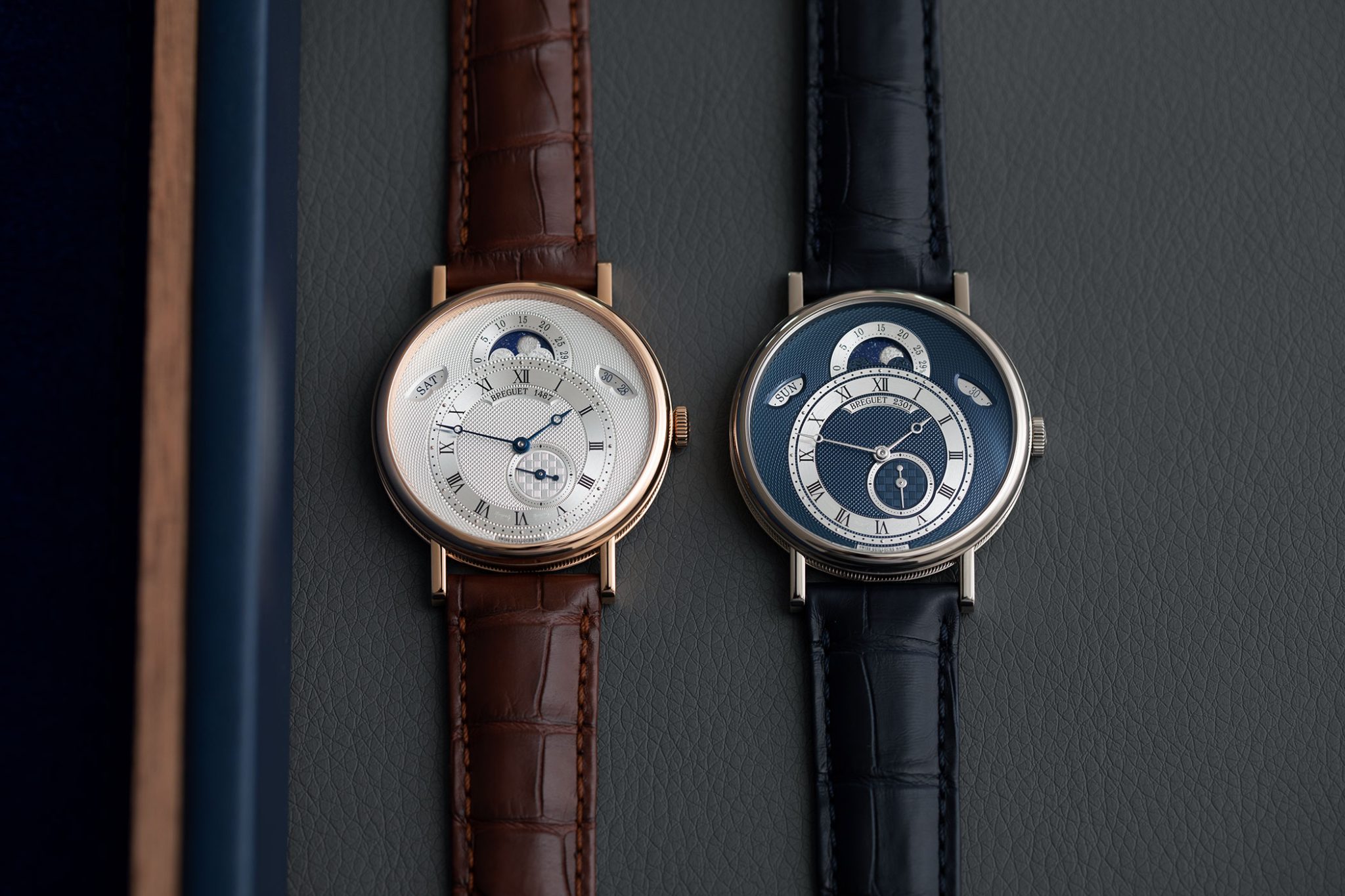
Classic? No. Classique!
In today’s social media-driven world, personal preferences are somewhat a rarity; ‘likeable’ watches tend to be sports watches, and in the best possible scenario, they’re designed by Gerald Genta. This (Instagram-fuelled) hype gives the unjust impression that the watch world revolves exclusively around a handful of timepieces. It is therefore wise to take your mind out of this social media bubble from time to time, in order to reflect on what is most important for true watch lovers: craftsmanship and history.
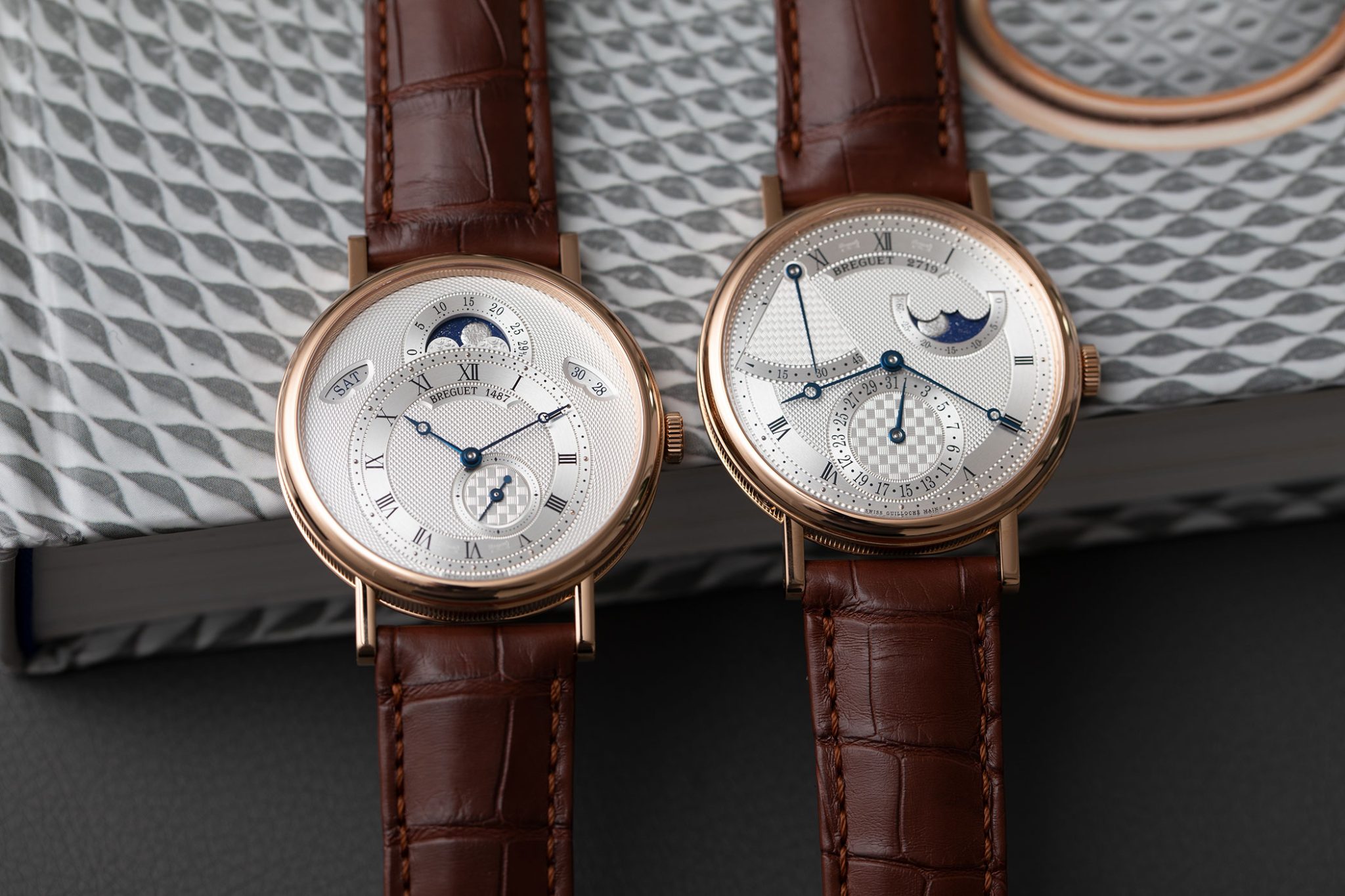
This includes the high expectations the manufacture has on itself, but above all, one’s individual and truly personal taste. You may already notice that an exquisite dress watch is perhaps much better suited to your own lifestyle than a watch with a metal bracelet. Furthermore, the fact of the matter is that such an artistically executed guilloché dial is a treasure in itself; it is an essentially miniature work of art to wear on the wrist. This makes it a sight that one can hardly get used to seeing, but in the best way possible. The House of Breguet is now part of the Swatch Group, and its Swiss-French history is cultivated with great passion. Therefore, a Breguet will probably never be loud and attention-seeking. They are deliberately made to be watches for a second, third and fourth glance.
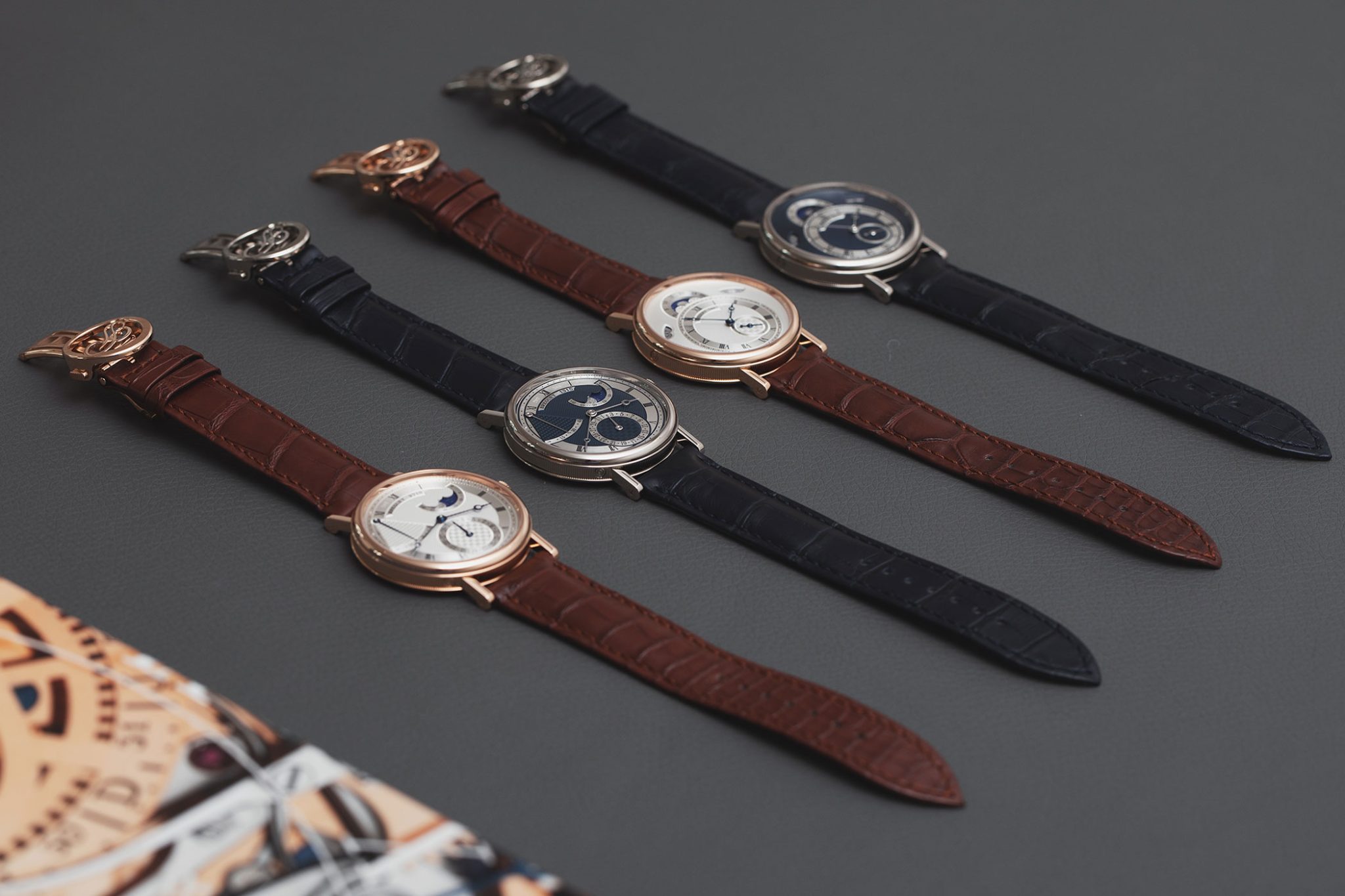
But you shouldn’t let the name ‘Classique’ take over any assumptions too much: Abraham-Louis Breguet was drawn from Switzerland to Versailles and Paris in the mid-18th century. He wanted to live and work in what was then the capital of the world, the epicentre of taste, progress and power. He changed and shaped his industry for centuries. The Classique models of today therefore combine many of the innovations of yesteryear with an irrepressible drive for innovation, and the joy of reinvention.










